Parenting Tips
Social Media Safety: How to Protect Your Child’s Privacy
Preserving your child’s privacy on social media is more important than ever. Here’s how to keep them safe online and the role your own social media presence plays in this process.
When it comes to navigating social media as a parent, the online world is still largely uncharted territory – a unique challenge that current and emerging families must face.
In our contemporary world, it’s almost impossible to escape social media. In January 2025, there were 20.9 million unique social media identities originating from Australia, equating to 77.9 percent of the country’s total population.
Social media has become the go-to place to read the news, communicate, and share photos and updates about their lives to family, friends, and the world.
Rather than being passive in educating your children about online safety, taking a proactive approach and informing them from a young age is an effective way to minimize harm and ensure they have all the tools needed to navigate the online world.
However, it’s not just their own social media usage that can compromise their safety, it’s yours as well.
Protecting Children On Your Own Social Media Channels
As a parent, you do not have to legally ask your child for their consent to share photos and videos of them online. In saying this, involving them in decisions about what you choose to post, or share, will help set a good example for your child and ensure they are protected online.

Consider before Sharing:
Avoid sharing photos, videos, or posting comments on social media that contain personal details. This includes:
- Your child’s full name
- The name of the school they attend
- Uniforms that identify local schools, sport teams, etc
- Identifiable landmarks or features that may reveal your child’s location
- Sharing the details of your child’s extracurricular activities
Quality over Quantity: Only share with trusted people
Instead of posting to all your friends on social media, most platforms allow users the chance to create a curated, smaller list of people to send content to. When sharing photos of your children, consider utilizing these privacy settings to limit who can see your posts.
Note: Even if you limit who sees your post, if one of your friends likes or comments on your picture or video, it may also be visible to their friends.
In addition, always check with other parents before posting content that includes their child. Some parent’s may never post their children on social media and it’s important to respect those boundaries.
Alternative ways to share photos and videos of your child
There’s nothing wrong with wanting to let your nearest and dearest know what is happening in your child’s life. To share their achievements, special moments and much more.
Rather than choosing social media as the avenue to do so, consider these other alternative methods that give you more control and ownership over who has access to the photos and videos of your children.
- Emailing photos and videos to family and friends
- Create a shared Google Drive or OneDrive
- Use text (SMS or MMS) rather than social media messenger apps
Start the Social Media Conversations Early
Despite most social media platforms having an age requirement, these things do very little to block underage people from using various social media platforms.
With more children than ever having their own phone to communicate with their family, concerns regarding usage and their access to social media apps are an emerging risk, growing each year.

A 2024 report from the eSafety Commissioner unearthed widespread social media use among underage children across Australia.
The study found that 80% of respondents aged 8-12 years old had used one or more social media platforms in 2024. Of these, 84% said that their parents or carers knew about their social media accounts and that they were active on these platforms.
Social media will not being going away anytime soon. After all, online portals and resources are used regularly for education as well as entertainment and socialization. While social media impacts teenagers and older children more than it does for toddlers and pre-teens, the earlier you begin to talk to your children about social media, the better.
Taking a proactive approach
Take the time to sit down with your children and create an open and safe space for them to question and consider social media. Be the safe space so they don’t feel obligated to make secret accounts and hide content from you.
Discuss the dangers around safety and security on social media. Why and how it’s important to never share personal information – including their phone number, address or any other personal information – online. What’s more, feel confident as a parent to be firm and decisive when required.
Some other helpful and simple steps to help keep your children safe online include:
- Supervise children online and monitor what apps they use
- Turn off chatroom functions and social media features on gaming platforms (such as Roblox)
- Keep devices in communal family areas
- Discuss the permanency of posting on social media
What are the Laws Around Underage Social Media Use in Australia?
To combat the rise of social media usage amongst children and teenagers across the country, the Australian Government passed a new law – the Online Safety Amendment (Social Media Minimum Age) Bill 2024 – on 28 November 2024.
This law will take effect in December 2025 and will introduce a mandatory minimum age of 16 for accounts across a range of social media platforms.
“We want Australian children to have a childhood, and we want parents to know the Government is in their corner,” stated Prime Minister Anthony Albanese regarding the implementation of this bill.

The social media platforms that will require users to be above the age of 16 to create an account in Australia includes:
- TikTok
- Snapchat
- X (formerly Twitter)
Companies that own these social media platforms could face fines of up to $50 million if they fail to act and assist in stopping Australians under the age of 16 from having accounts.
YouTube, Google Classroom, Messenger Kids and WhatsApp have not been included in the Online Safety Amendment Bill.
Explorers and Social Media Safety
At Explorers Early Learning, the privacy of families and children across all of our centres is managed with the upmost care and importance. Our privacy policy outlining these guidelines, rules and restrictions is be accessible here.
Every family must give their consent to allow their child to be photographed and if a parent does not wish to give their consent, we will always respect their decision and desire for privacy.
Content posted on an Explorers Early Learning social media channel, such as Instagram or Facebook, does not include images of children’s faces or identifiable features. In the instance that a child is featured across one of these platforms in a recognisable manner, parent consent must be explicitly given before doing so.
After more insightful and explorative parenting content? Be sure to check out our other articles on the Explorers Blog, including Flu Frenzy: How to Boost Your Child’s Immune System This Winter and our Child Care Subsidy (CCS) Explained deep dive.
🍃 To tour one of our beautiful centres, please click here. Otherwise, check out our website to register your interest at Explorers Early Learning today!
Flu Frenzy: How to Boost Your Child’s Immune System This Winter
Worried about your child getting the flu this winter? Here’s how to best support them during the sick season, boost their immune system and minimise the risk of them getting sick.
Influenza season in Victoria typically spans from June to September. During these months, the risk of your child coming down with the flu is much higher. With record-high cases of the flu impacting Australian’s across the country this year, it’s more important than ever to be vigilant about your child’s health to minimize the risk of them catching the flu.
The Victorian Department of Health recommends for everyone to receive an annual influenza vaccination from mid-April onwards. As well as this, there are a variety of ways to help reduce the likelihood of your child coming down with the flu.
On top of ensuring your child is dressed appropriately for the cold, one of the most beneficial things you can do as a parent is to boost your child’s immune system. The immune system is the body’s first line of defense and if under stress, the ability to fight off a cold, infection or other illness is reduced.
Continue reading for our full breakdown on how to support your child’s immune system during the flu season to reduce the risk of sickness and encourage a quick recovery.
Signs and Symptoms
First and foremost, it’s important to know what signs to look out for when worried that your child may be coming down with the flu.
The most common symptoms to look for if worried your child does have the flu include:
- Runny or stuffy nose
- Sore throat
- Loss of appetite
- A dry cough
- Body aches and lethargy
- High fever (38 degrees or more)
- The shakes or chills
Best Nutrition to Boost Your Child’s Immune System
One of the best ways to boost your child’s immune system is by providing them with both delicious and nutritious foods.
As an infant or toddler, your child’s immune system will be continually changing and developing. Therefore, it’s important that they are provided with the right nutrition from birth to support their development and growth.
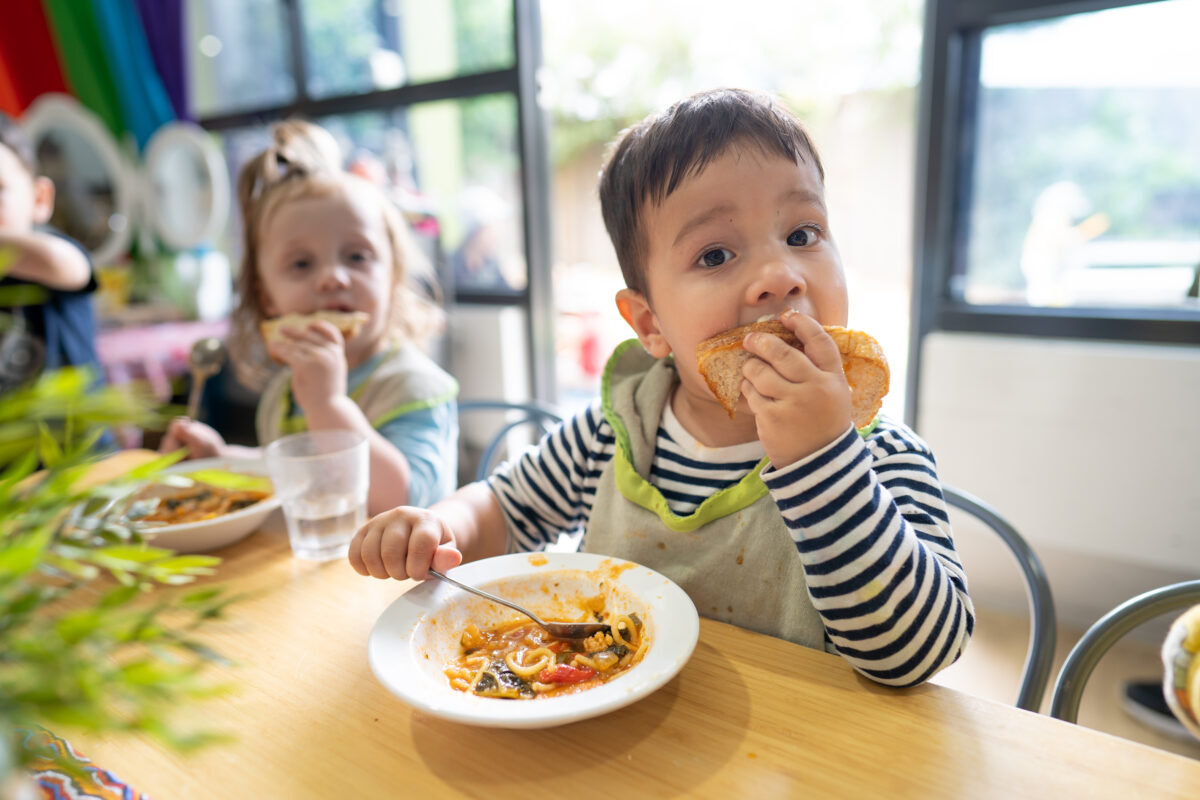
Incorporating a wide range of nutrient-rich foods and good sources of prebiotics will help build up your child’s immunity, in turn helping their long-terms health as well as give them a solid defense against sickness during the colder months.
Prebiotics
Prebiotics help protect your child’s stomach again potentially harmful bacteria by promoting the presence of beneficial bacteria in the stomach. Some of the best sources of prebiotics for children are:
- Banana
- Tomato
- Onion
- Garlic
- Whole-wheat foods
Iron
Iron is vital for stimulating the formation of haemoglobin, the protein found in red blood cells that works throughout the body to ensure oxygen is transported around the body. On top of aiding cognitive development for children, an iron-rich diet will reduce the chances of your child being susceptible to infection. Some of the best sources of iron for children are:
- Meat
- Beans
- Nuts
- Spinach and other dark green and leafy vegetables
Zinc
Zinc is one of the most important minerals to include in your child’s diet to develop their immune system. Given that the body doesn’t store zinc, it’s vital that your child’s diet is rich with this mineral, particularly during the flu season. Some of the best sources of zinc for children are:
- Milk
- Cheese
- Bread
- Cereal
- Meat
Vitamin D
Consistent supply of Vitamin D is another essential nutrient that plays a vital role in supporting the development of your child’s immune system and defense against infection. What’s more, a Vitamin D heavy diet is also linked to the prevention of allergies, a growing health concern throughout Australia.
While the most accessible and effective source of vitamin D is sunlight, the lack of exposure to the sun throughout the darker months of winter means many are at risk of having a lower vitamin D intake than they need.
Thankfully, there are plenty of food sources that are rich in Vitamin D, including:
- Eggs
- Fish
- Mushrooms
Vitamin C
Another important mineral to reinforce your child’s immune system is Vitamin C. As a natural antioxidant, a strong source of Vitamin C is needed by white bloods cells to fight infection if your child does get ill. Some of the best sources of Vitamin C for children are:
- Oranges
- Broccoli
- Capsicum
- Kiwi fruit
- Sweet potato
Vitamin A
The final mineral to include in your child’s diet is Vitamin A. This mineral helps support immune cell function and generate antibody response to minimise sickness and promote recovery as quickly as possible. Some of the best sources of Vitamin A for children are:
- Eggs
- Cheese
- Yogurt
- Carrots
- Spinach
It’s important to add that on top of feeding your child the right nutrients, drinking water and fluids is vital to strengthen their immune system.
Rest is Best: How a Good Night’s Sleep Can Make All the Difference
Getting a good night’s sleep is always important, particularly in supporting the development and growth of babies, toddlers and children.
As stated by Essendon Natural Health, “good sleep is the cornerstone of a robust immune system.”
Good quality sleep allows the body to rest and recharge. In the case of warding off sickness, sleep boosts the immune system and will help minimize the chance of your children developing a cold or an infection.
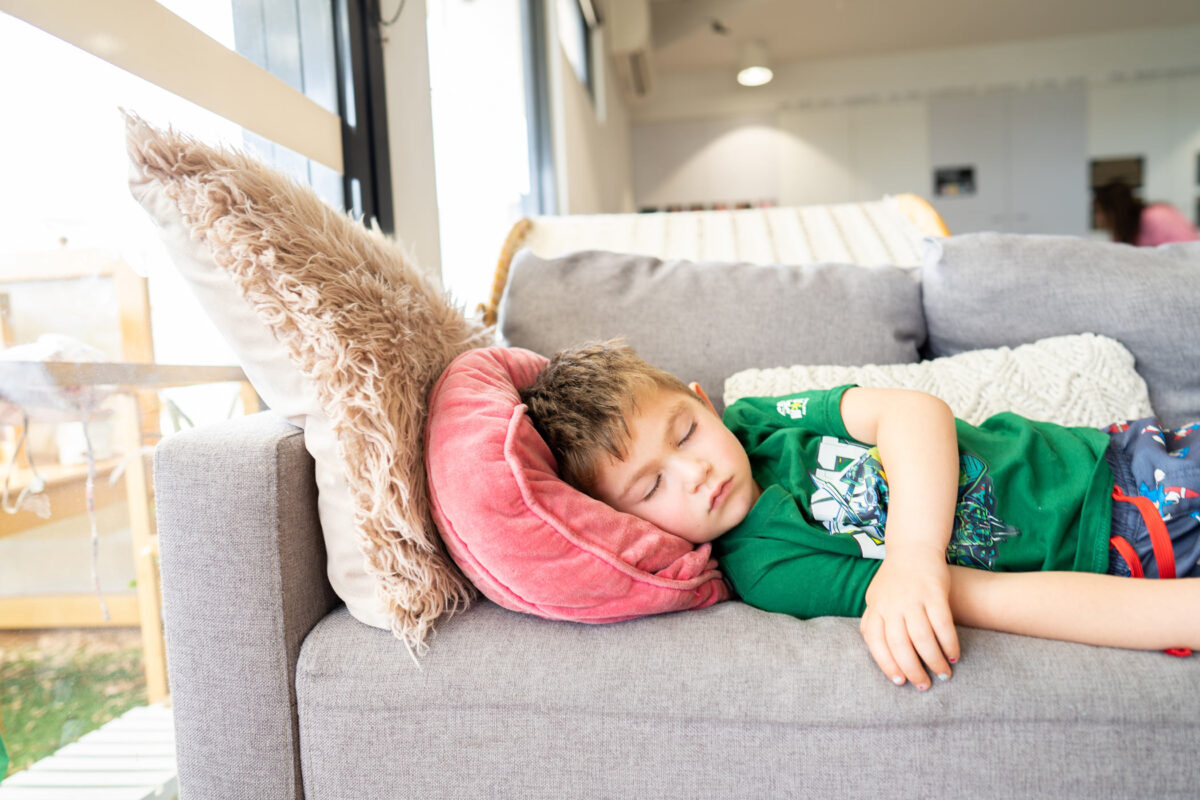
What’s more, rest is also a key factor when promoting recovering and if your child is sick, ensuring they can stay warm and sleep off their illness will speed up the process.
While every child has different sleeping patterns evolve and change over time, The Royal Children’s Hospital Melbourne recommends the following amount of sleep:
- Children aged between one and three-years-old: 12 – 14 hours of sleep
- Children aged between three to six-years-old: 10 – 12 hours of sleep
Stop the Spread of Germs & Encourage Good Hygiene Habits
Influenza is a highly contagious sickness and can spread between people rapidly. Teaching your children to uphold and practice good hygiene, while simple, can go a long way in minimizing the risk of them getting sick.
If your child does get sick, good hygiene habits will also reduce the chances of infection spreading to their peers, family members and others.
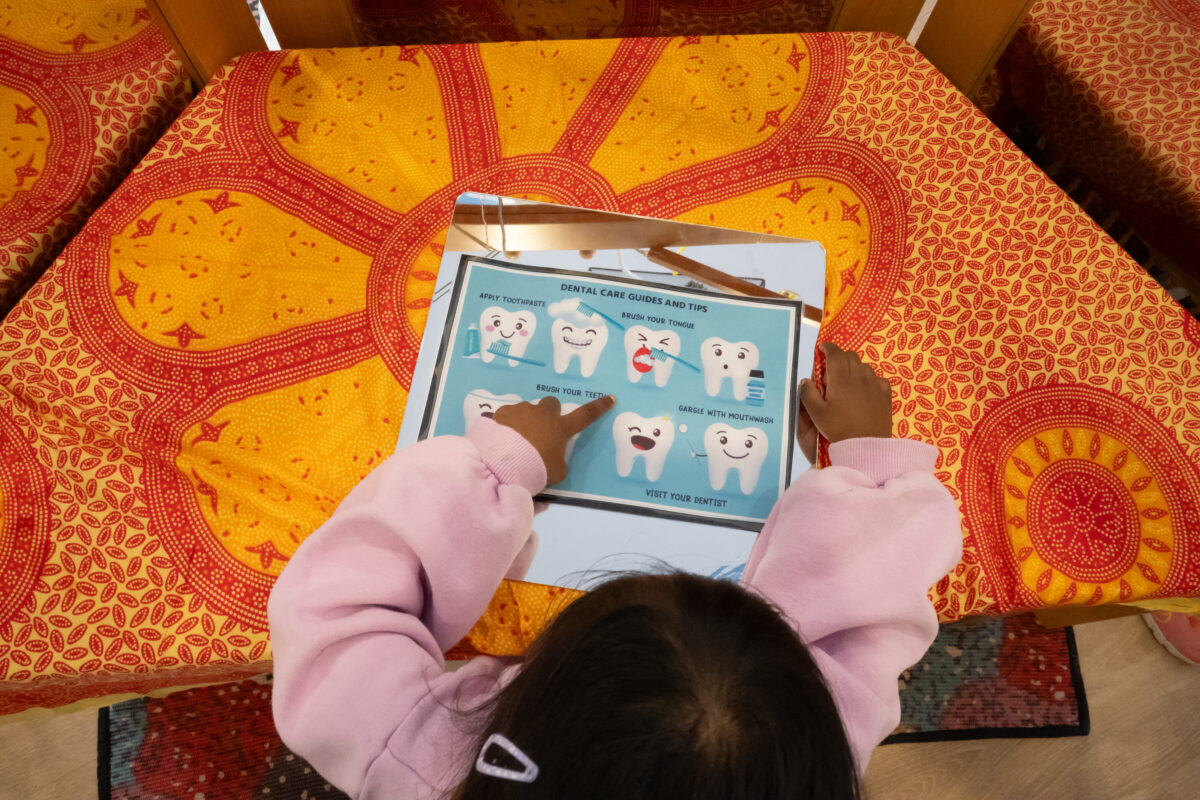
Take some time to chat to your children about:
- Washing their hands thoroughly and when appropriate
- Covering their mouth to cough
- Using tissues to clean their nose after sneezing
- Wear a face mask around others if comfortable doing so
Keeping the Flu Out of Explorers
At Explorers Early Learning, we take the time and energy to ensure all our centres support every child’s health and wellbeing.
During the flu season, this pillar of care is more vital than ever to ensure the risk of children, educators, and families getting sick is as low as possible.
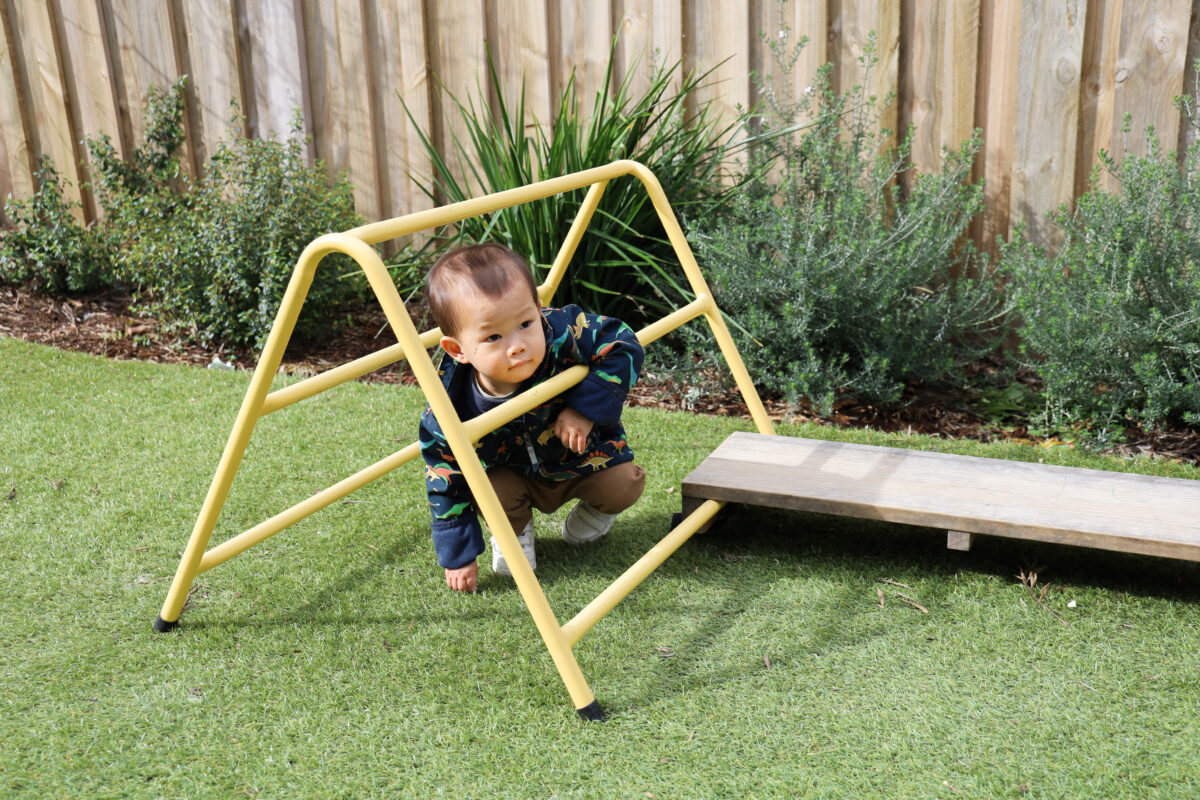
Some of the ways in which Explorers works to ward off illness spreading through centres includes but is not limited to:
- Nurturing good hygiene habits
- Open communication with families
- Ensuring air circulation and regulation across every room
- Encouraging the importance of warm clothing
- Cleaning surfaces, toys and tools consistently
- Check in regularly with children
What’s more, our qualified centre chefs prepare meals everyday as part of our seasonal menu approved by Nutrition Australia. The meals provided are filled with the nutrients required to boost your child’s immune system and promote healthy, happy eating.
🍃 To tour one of our beautiful centres, please click here. Otherwise, check out our website to register your interest at Explorers Early Learning today!
5 Things Your 5-Year-Old Should Know
Personal info, safety plans, triple 000, what else? Read on for our checklist of five things every five year old should know 👇
Early childhood is full of exciting milestones and unforgettable moments. However, while learning ABCs and 123s is a must, it’s also vital to keep safety education front of mind. Therefore, actively educating your child around safety plans and stranger danger provides foundational skills for a happy and healthy childhood.
In this post, we list five crucial things every 5-year-old should know. Additionally, we’ll explore why paediatricians stress the importance of children knowing vital information from their personal details to calling triple zero in an emergency.
1. Personal Information
By age five, children should know their basic contact details:
- Full name
- Date of birth
- Parents’ full name
- Home address
- One or both parents’ mobile phone numbers (if you don’t have a home phone)
While names and addresses are much easier to memorise, phone numbers present new challenges. You can sing the numbers out with your child or invite them to write them down in sand or mud. Otherwise, lean on muscle memory by encouraging your child to pretend dial on a number pad drawn on paper or cardboard.
Moreover, keep your phone number regularly in sight, such as on the fridge or hanging on a poster in your child’s room. Regularly invite them to sound it out, whether through singing, dancing, or making a story out of it – whatever it takes!
Alternatively, you can sew a patch containing your contact details inside your child’s clothes. Just be sure to remind your child frequently where it is, so they can share the information if needed.
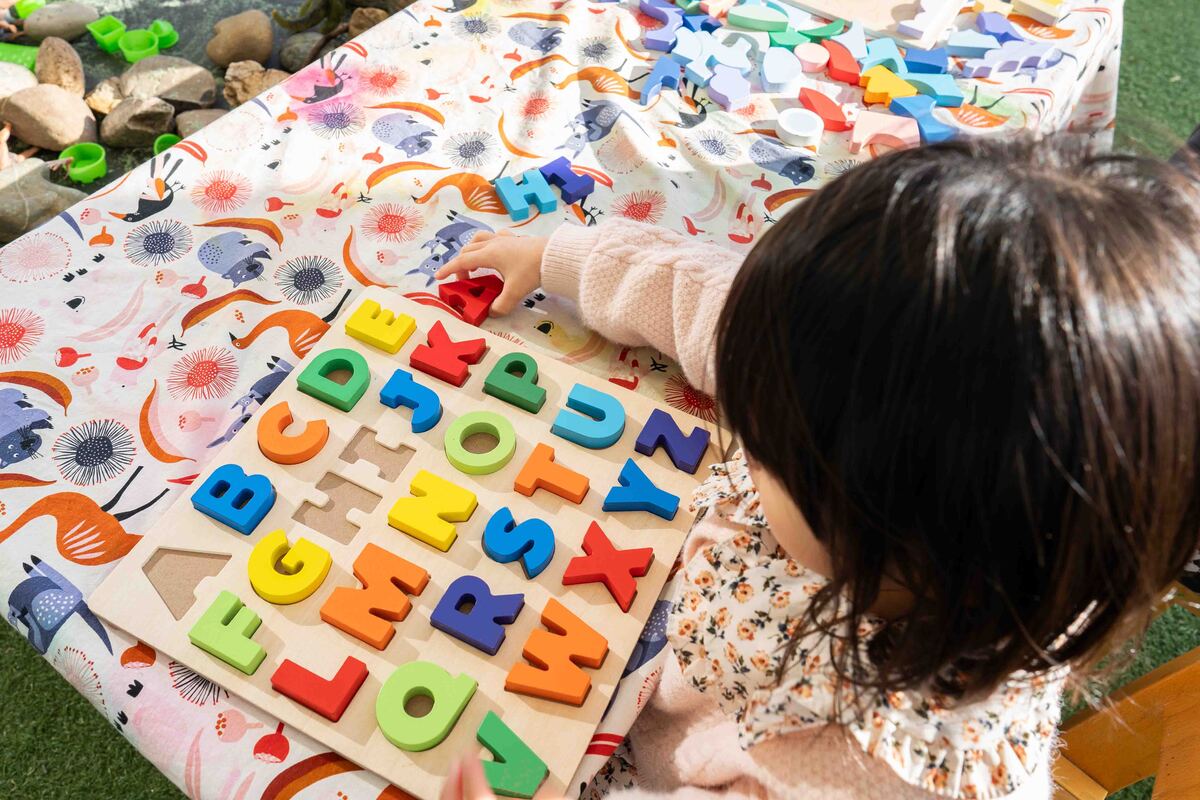
2. Safety Plan
Children getting lost is a common concern for parents, so preparing a safety plan is essential. Firstly, have a calm discussion with your child about what to do if they get lost. However, try not to scare them!
Children’s vivid imaginations may sometimes lead to anxiety. It’s important to be firm yet reassuring in safety education – there’s no need for unnecessary worry for you or your child.
The best safety plans are clear, concise, and easy to remember for the whole family:
- Stop: Remain calm, look around, and assess the situation.
- Find a safe space: This should be away from traffic, bodies of water, high places, or dangerous machines.
- Call out for your parents/caregivers by name: It’s crucial that your child avoids shouting ‘mummy’ or ‘daddy’ in public places, such as shopping centres or supermarkets, to prevent confusion if they get lost (especially if it’s somewhere full of other children). As part of your safety plan, remind them to call out for help in various environments, including quieter places like libraries or theatres. Since children may feel embarrassed, consistently stress that their safety is the utmost priority.
- Look for a mum with children or seek out staff: When your child is in a crowded place and gets lost, encourage them to look for staff members or other mums with children. Teach them to confidently identify and speak with staff for assistance. Emphasise this safety measure regularly when you’re out together. Alternatively, guide your child to seek help from a mother with children. Children tend to feel more secure around their peers and women are statistically more likely to assist lost children.
Additionally, plan a designated meeting spot at every event you attend. This could be a help desk, a ride at an amusement park, or a fountain at the park. However, teaching them which strangers to trust and which to avoid presents challenges around stranger danger.
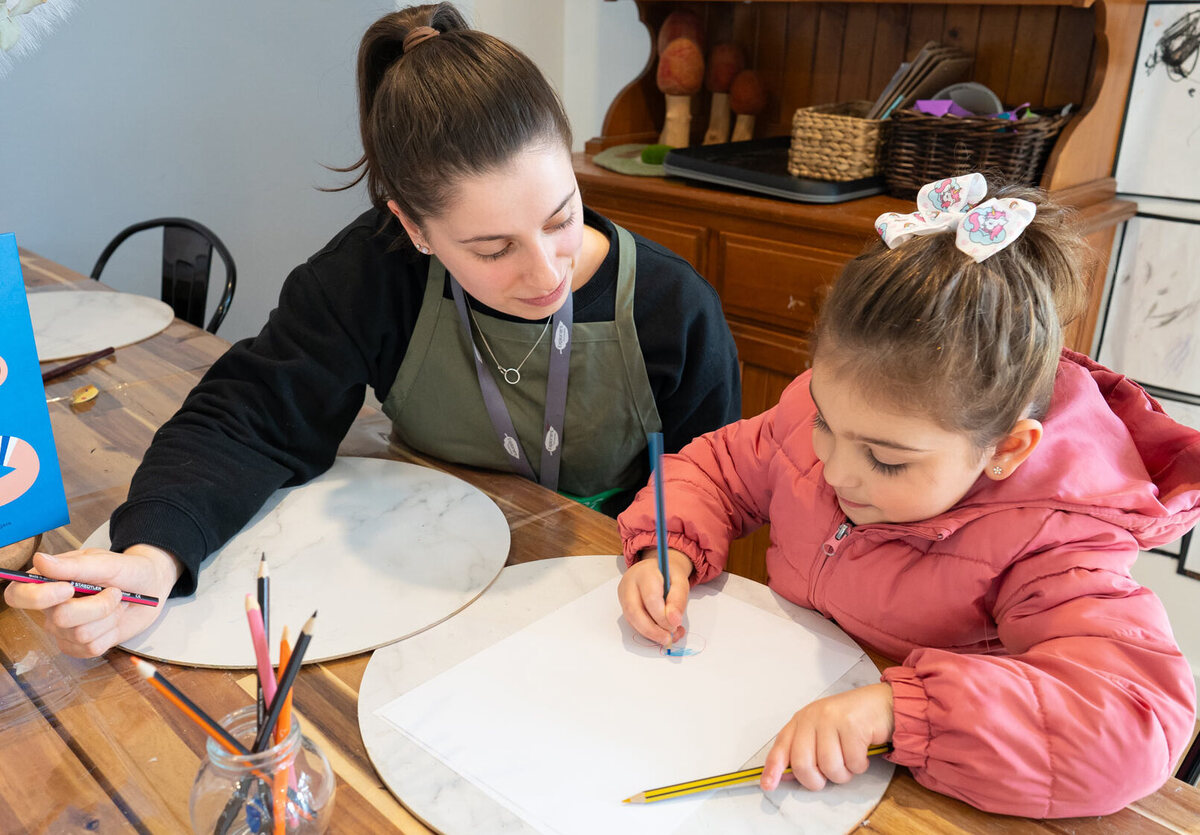
3. Stranger Danger
By age five, children should have an understanding of stranger danger. This is especially important as they enter primary school and begin venturing into social situations (birthday parties, school excursions, etc.) outside of your supervision.
Firstly, calmly discuss what a stranger is with your child. You should be as broad as you can with this definition – a stranger is anyone your family doesn’t know. Stress to your child that if they are alone with an adult they don’t know, they should always exercise caution.
Then, outline the stranger danger guidelines:
- Never take food or drinks from strangers.
- Never answer the door without adult supervision
- Never let a stranger into the house.
- Never get into a stranger’s car, house, or follow them without a parent or trusted guardian present.
- Stress the importance of saying NO if a stranger is making them uncomfortable – run away and shout if they’re feeling uncomfortable or in danger and immediately seek out a trusted adult.
4. How to Call 000 in an Emergency
Teaching children how to respond in emergency situations is a vital life skill. Make sure they understand the significance of the emergency number – 000. Luckily for us Aussies, this is an incredibly easy number to remember, and be sure to regularly remind your child about it. Guide them through basic scenarios and role-play what to do in an emergency.
You can also make a game out of it by using the Government’s official Triple Zero Kids’ Challenge app! This makes learning the ins and outs of calling triple zero fun and memorable for children.
However, also stress that it should only be used in an emergency. Making joke calls or deliberately misusing triple zero is against the law and might land you a hefty fine.
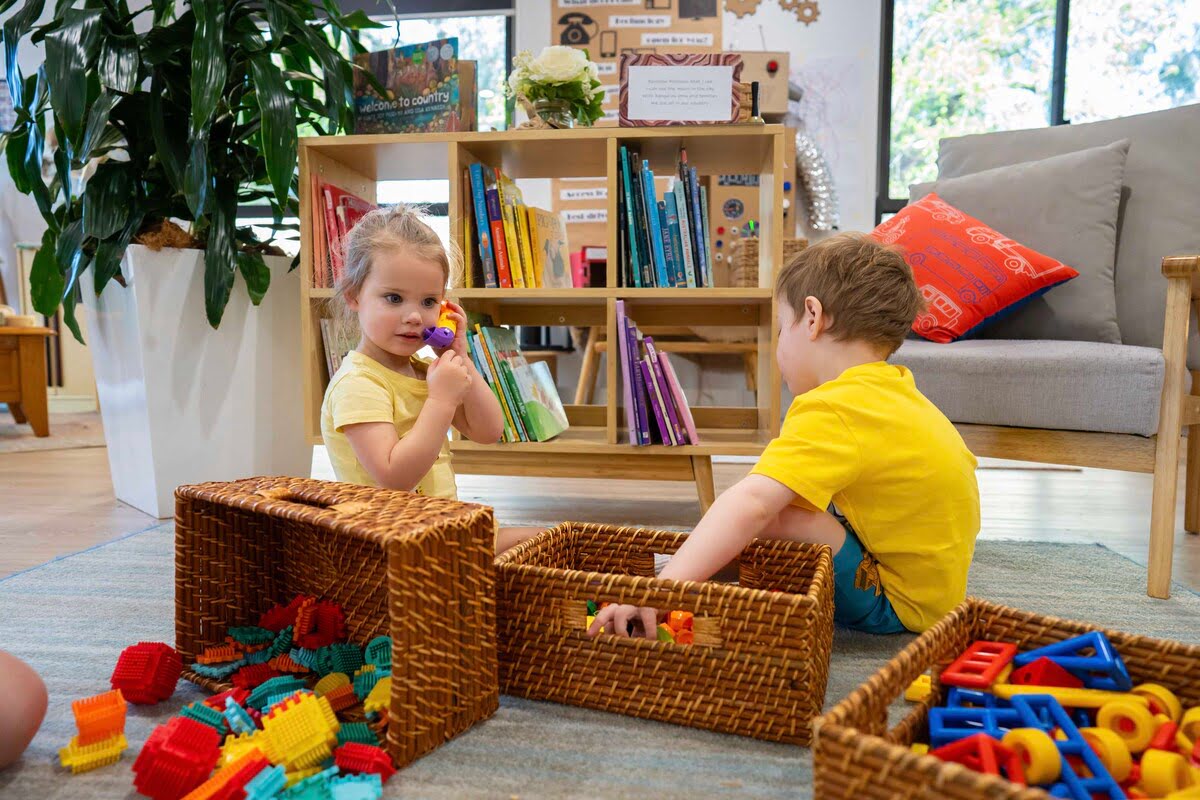
5. Allergies (Their Own or Siblings)
While food allergies can develop at any age, 75% develop before age five. Therefore, if you’re already aware of your child’s food allergies, and it’s a serious allergy, be sure to regularly remind your child of their condition. Additionally, remind them what will happen if they do eat – or in some cases merely come into contact with – their allergen.
This is doubly important for children with siblings who have anaphylactic allergies. As children embark on primary school, birthday parties, and social outings, it’s vital they remember what allergies are, what kinds of foods it may be in, and how to assert themselves in social situations. It’s okay to say no or to remind adults or caregivers of children’s allergies if they suspect it may be in the food they’re about to consume. Also, be sure to regularly go through role plays and drills, especially if they carry an EpiPen.
To learn more about allergens and how to introduce them to toddlers, check out our blog post here.
In conclusion, teaching your 5-year-olds the safety essentials doesn’t have to be daunting. With the right approach and a calm voice, you can inform your child of everything they need to know for a safe and fulfilling childhood.
Remember – preparation is the best defence. Whether you make a song of dance of remembering their phone number or role play calling triple zero, you can take a few easy steps to keep your child happy and safe well into adolescence and beyond.
🍃 To tour one of our beautiful Centres, please click here. Otherwise, check out our website at Explorers Early Learning today!
Introducing Allergens to Toddlers: A Parent’s Guide to Allergy Alertness
Worried your bub may have a serious allergy? What is an allergy anyway? Read on for our full breakdown of how to identify, treat, and understand allergies 👇
Food allergy rates have surged in recent decades. In Australia, 10% of infants and up to 8% of children suffer from food allergies. Likewise, allergy and anaphylaxis hospital admissions have increased by 350% over the past 20 years.
With over 170 foods known to trigger allergic reactions, it can be daunting for parents to identify and monitor these allergies for their children’s safety and wellbeing.
However, armed with a vigilant mindset and support from medical professionals, you can identify allergies early to ensure your child has a safe, happy, and healthy childhood.
What is an Allergic Reaction?
An allergic reaction is an abnormal response in the body’s immune system. For instance, if someone is allergic to peanuts and consumes peanut butter, which is considered the ‘allergen’, the immune defences mistakenly identify the peanut’s proteins as a harmful invader. Consequently, the immune system releases histamines that trigger inflammation, redness, and itching.
While most allergic reactions are mild, some are anaphylactic which can be life-threatening. Some anaphylactic symptoms include:
- Swelling (lips, face, eyes, tongue, etc.)
- Hives
- Difficulty breathing
- Wheezing or persistent cough
- Dizziness
If you suspect your child is having an anaphylactic reaction, call emergency services immediately.
How Many Allergens Are There?
While there are as many as 170 allergenic food and drinks, nine account for around 90% of allergic reactions:
- Peanuts
- Tree nuts (almonds, cashews, hazelnuts, macadamias, walnuts, etc.)
- Wheat
- Eggs
- Milk
- Sesame
- Fish
- Shellfish
- Soy
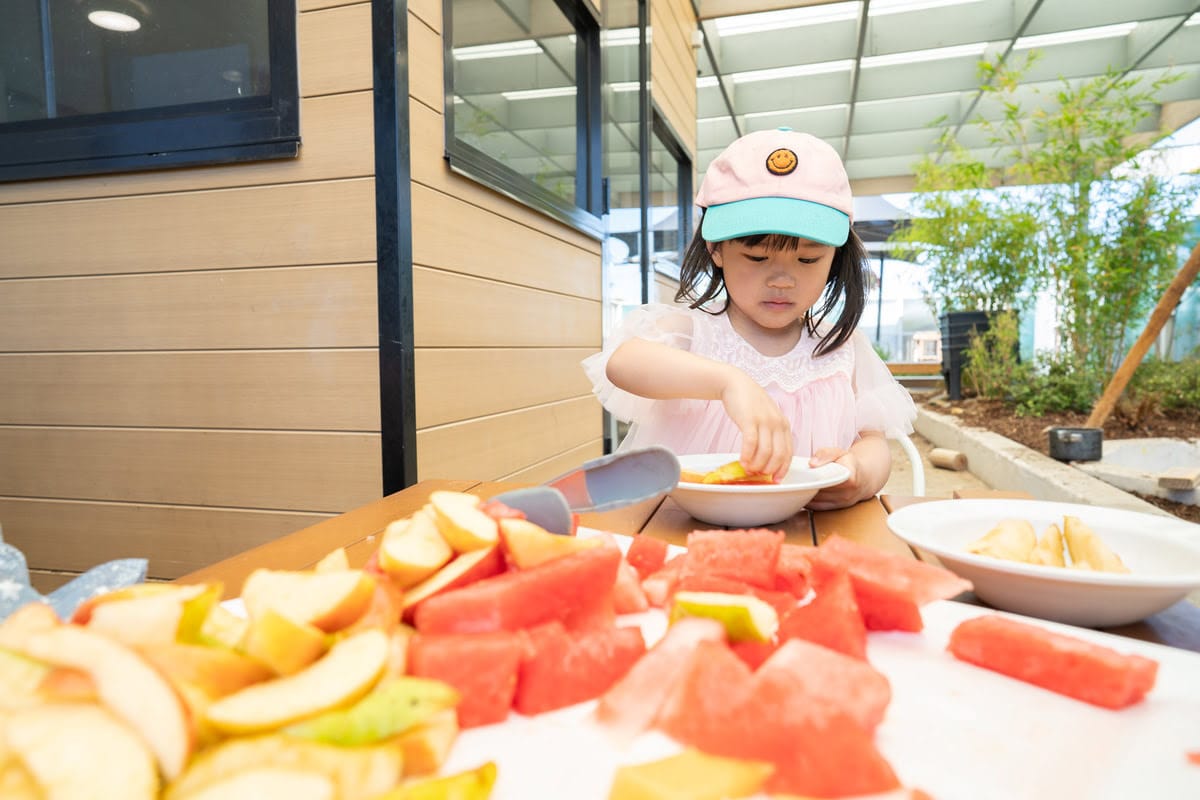
What’s Causing the Rise of Food Allergies in Australia?
While there’s ongoing debate around why allergies are rising in industrialised countries, such as Australia, a prevailing theory points to gut health. This is also referred to as the gut-allergy axis. One study argued that ‘observational findings support the notion that differential microbial exposure and colonisation in early childhood may modify risk for the development of food allergy.’
In other words, babies who are exposed to more diverse gut microbiomes through a varied diet in their early years may be less likely to develop allergies later in life.
How Can You Introduce Allergens to Toddlers?
Growing research suggests introducing common allergenic foods to babies is vital for preventing potential allergies. However, this can only be done when your child is ready for solids, which is around the six month mark.
When introducing allergenic foods, consider the following:
- Introduce all nine common food allergens by the time your child is one year old – but only one at a time. Also, wait a few days between introducing allergenic foods to observe any delayed reactions.
- If your child does have an allergic reaction to a specific allergen, stop giving them that food and immediately contact a medical professional.
- If your child doesn’t have an allergic reaction, keep feeding them that food at least twice a week. This is vital for your child’s immune systems to recognise the food isn’t harmful.
- Introduce a variety of foods, including different fats, proteins, vitamins and minerals.
- Keep texture in mind. For examples babies and very young children should not be fed whole nuts which pose a choking hazard, opt for spreads instead.
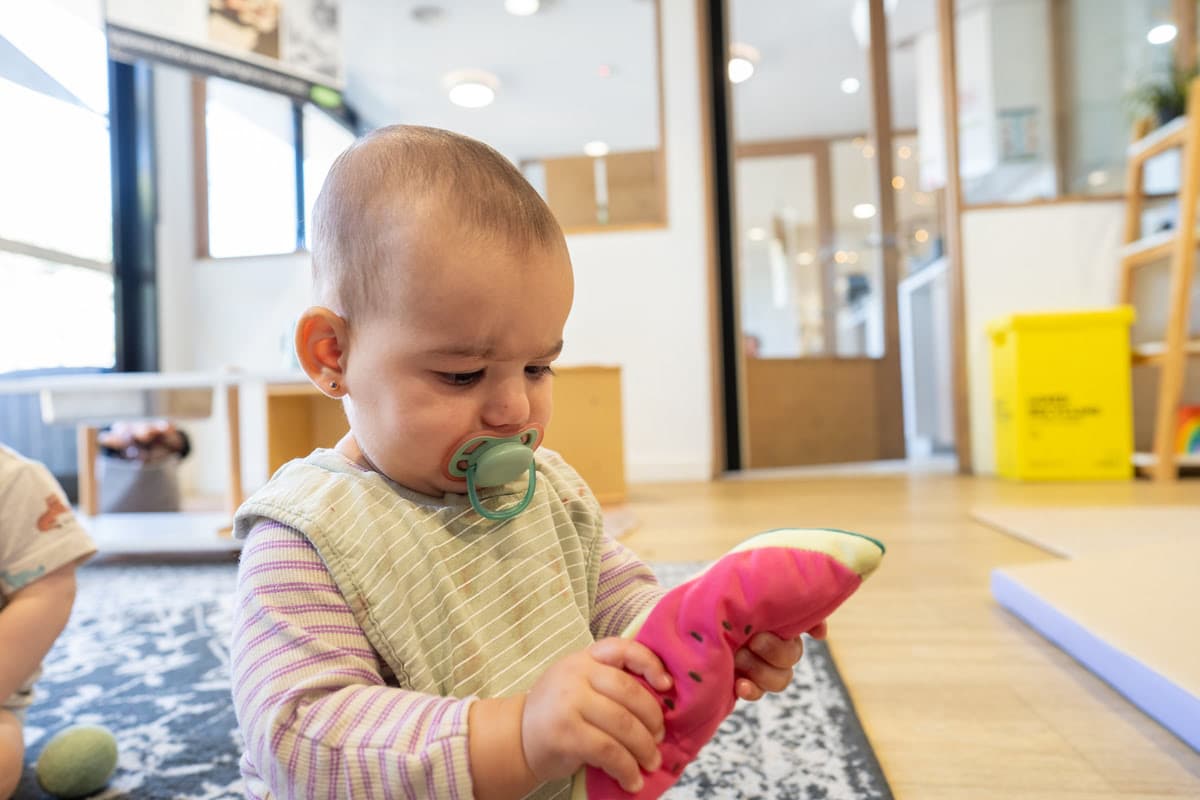
Are Babies Born with Allergies?
While some babies develop allergies in the womb, often revealed by allergic reactions to milk-based formulas, most develop them during infancy.
Additionally, while allergies are often hereditary, this isn’t always the case. Many children often develop allergies without any family history, so be mindful when introducing allergens to your baby.
How are Allergies Treated?
Unfortunately, there are currently no cures for any allergies. While research in this area continues, the most common treatments include vigilance and safeguarding by adjusting lifestyle and eating choices, often for the whole family.
If a family member has an allergy, keep the allergen out of the house entirely. For younger children, regularly discuss their allergy with them, including symptoms, triggers, and treatment – especially if they carry an EpiPen. Consistently educating and reminding your child of their allergies is essential for vigilance as you can’t always be there to monitor their food choices.
Additionally, inform all caregivers and food/drink providers of your child’s allergy:
- Childcare educators
- School teachers
- Babysitters
- Family members
- Parents of your child’s friends
- Restaurant staff
- Event caterers

Allergy Tests
If you’re experimenting with an allergenic food that a sibling is severely allergic to, make sure the allergic child is out of the house. Then, clean all utensils, plates, surfaces, and wipe your baby’s mouth and hands. Alternatively, seek out an allergist or immunologist to perform allergy tests:
- Skin prick tests: A healthcare professional will apply a range of allergens to your child’s forearm and gently prick them with a needle. If your child has an allergic reaction, a red welt will appear (these fade after an hour or two).
- Oral allergen challenge: Your child will be fed common allergens and observed by a clinical immunologist or allergy specialist in a controlled setting.
- Patch tests: While not food related, patches are placed on your child’s forearm (similar to skin prick tests) to observe their reaction to contact dermatitis. The materials tested include:
i) soaps and fragrances
ii) nickel (jewellery)
iii) chrome (leathers and certain cement)
After a few days, a healthcare professional will remove the patches to observe the results. If the patch is welted, your child is allergic to that specific material. - Blood test (otherwise known as IgE testing): This is for children who can’t have skin prick tests, or if results are inconclusive. A blood sample will be drawn and sent to a lab for testing to measure the allergy specific IgE (immunoglobulin) in your child’s body.
In conclusion, the rising prevalence of food allergies in Australia calls for heightened awareness among parents. Identifying allergens, understanding causes, and introducing allergenic foods cautiously are crucial.
And while there’s no cure, vigilance – from both you and your child – remains your first line of defence against potentially harmful allergies. By consulting healthcare professionals, educating your child, and keeping caregivers in the loop, you can create a safe environment for your child without compromising their development.
🍃 To tour one of our beautiful Centres, please click here. Otherwise, check out our website at Explorers Early Learning today!
An Explorers Guide: What to Pack for Childcare
Is the first day of childcare sneaking up on you? Check out our list of must-pack items to ensure a smooth start to early childhood education 👇
After touring the Centre, filling out the forms, and meeting your child’s Educators, the first day of childcare will come before you know it. Although Explorers Early Learning provides the essentials, there’s still children’s individual, medical, and emotional needs to consider.
So, what do you need to pack for your child for childcare?
In this post, we provide a must-read checklist of what to pack for childcare, detailing everything your child needs for a seamless start to this exciting first step in their education journeys!
What Do We Provide?
Explorers offers the following essentials for all the Little Explorers in our care:
- All meals (breakfast, morning tea, lunch, afternoon tea, and a late snack)
- Nappies
- Wipes
- Sunscreen
- Children’s bedding
- S26 Formula (if required)

What Do You Need to Pack for Childcare?
Each child possesses unique cherished items, medical needs, and individual considerations. Therefore, make a checklist of the following items in the weeks leading up to their first day.
Not every item will apply to each child, so it’s crucial to consider various items and clothing, especially for children enrolled five days per week.
Remember to clearly label your child’s belongings!
- Milk bottles and formula/breast milk (if required): Hand breast milk directly to our friendly staff for proper storage; please avoid leaving it in your child’s bag.
- Security/comfort items: This might be a stuffed animal, sentimental blanket, or extra special toy that your child may need for comfort, particularly for sleep times.
- A reusable water bottle filled with water only: We encourage water consumption at Explorers. Pack a clean water bottle for refills throughout the day, but remember to take it home daily for cleaning.
- Nappy cream (if required): Sudocrem is preferred. If not, please ensure your nappy cream is nut-free!
- A sleeping bag: If preferred, you can pack a sleeping bag for your child. Alternatively, Explorers will provide bedding.
- A complete change of clothes: This is essential as our Little Explorers engage in indoor play, outdoor play, and messy play. We ask that children do not wear singlets or open-toed shoes in summer. Children in toilet training should bring three extra sets of clothes and an additional pair of shoes.
- A warm jumper, woolly hat, and jacket for cooler weather: We love getting our Little Explorers out into nature, even in the colder months. Therefore, pack plenty of warm clothing as the chill sets in. Beanies are a favourite, which we provide!
- A wide-brimmed hat or legionnaires hat: Baseball caps provide little coverage during those scorching summers, so please pack a wide-brimmed hat instead.
- The Explorers Wet Bag (provided by Explorers): With all that outdoor play, children are bound to get wet from time to time. We’ve got you covered, just remember to bring a spare set.
- The Explorers Belonging Bag (provided by Explorers): Clearly label all items – you don’t want anything getting lost!
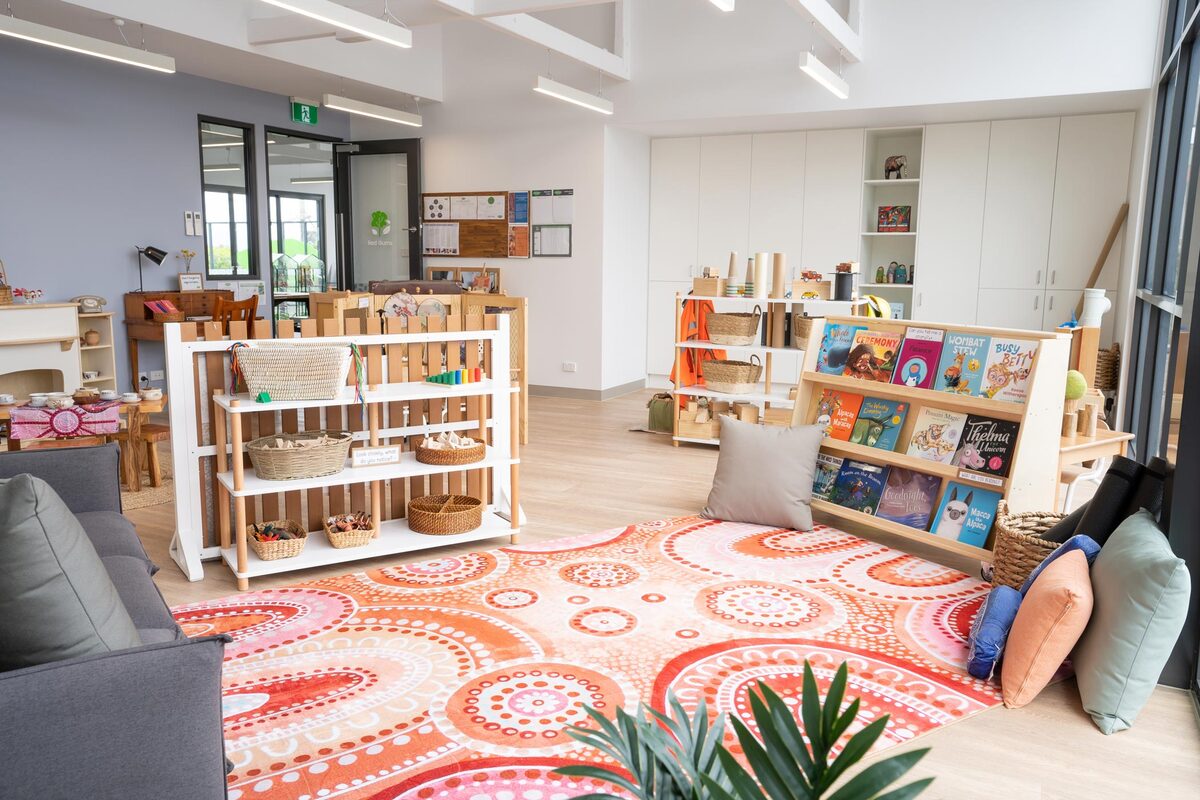
Do You Need to Pack Food or Meals?
Please do not pack any snacks or meals for your child. This is for the safety of all children, Educators, and visitors at the Centre who may have allergies and/or intolerances.
But rest assured, our brilliant chefs prepare all meals with loads of fresh ingredients, ensuring your child won’t go hungry!
What if Your Child Requires Prescription Medication?
If your child requires prescription medication throughout the day, please hand it directly to your child’s Room Leader and speak with reception to fill out the necessary forms. Please do not pack the medication along with your child’s other belongings – this is for children’s safety.
With all these considerations in mind, write out a checklist and speak with your child before the first day regarding each item in their bag. Let them know where everything is and why it’s there, particularly for their comfort items.
Likewise, be sure to speak with our knowledgeable and friendly Educators if you have any concerns. Above all, try not to worry – your child is in good hands. Not only is safety the number one priority at Explorers, they’ll also be receiving premium quality early childhood education to set them up for a lifetime love of learning and exploration.
🍃 To tour one of our beautiful Centres, please click here. Otherwise, check out our website at Explorers Early Learning today!
10 Essential Tips for Flying with Toddlers and Young Children
Worried about how your toddler will fare up in the air? Read on for our must-read tips from packing to landing 🛫
Planning a family holiday interstate or overseas is a buzz of anticipation and excitement. However, it also presents challenges if you have a toddler in tow. From squishy cabins to long lines, flying with toddlers and young children can take a heavy toll on the whole family.
However, many stressful flights with toddlers often arise from poor planning or little preparation. So, we’ve compiled a handy list of tips and tricks to ensure you and your toddler are fully prepared for take-off this holiday season!
1. Fly Direct (If You Can)
While it may seem like a good idea to have a layover where your toddler can rest up between long flights – or burn off energy – it may only compound the issue as they have to relive the experience all over again. And if you’re doing the same on return, what could be two flights suddenly balloons to four, five, or as many as six. And when you have a fidgety toddler, every minute in the air counts.
Therefore, fly direct if you have the choice. This increases the likelihood of a stress-free flight as your toddler may sleep for most, if not all, of the trip. And if your toddler is having a hard time, it’s better to get it over and done with.
2. Get up Early (Or Fly Nights)
If your toddler’s an early riser, try to book an early departure (if possible). This lessens the likelihood of delays, which can be stressful whether you’re four or forty. According to the Huffington Post and AirHelp, delays peak at around 6pm, and are at their lowest between 6am – 11am. This is largely due to less runway traffic, more planes ready to fly from the night before, and less planes in the air overall.
Conversely, if you’re traveling long-haul, consider a late-night flight. This can work in your favour as toddlers will be exhausted from a long day of packing and prepping. If you’re lucky, they’ll sleep through the whole thing!

3. Wear Comfy Clothing
Dress your toddler in comfortable layers for the flight. Airplane cabins can vary in temperature, so having extra layers allows you to adjust accordingly – this applies to parents too!
Moreover, consider packing a familiar blanket or stuffed animal for added comfort and a sense of security, along with any special pillows or neck cushions to ensure your toddler gets their rest.
4. Consider the Window Seat
While the aisle seat provides easier access to the bathroom, it isn’t ideal for young children.
Often, toddlers don’t quite know how to keep their hands and feet to themselves. Therefore, they might dangle them in the aisles and accidently knock passing passengers or flight attendants. Importantly, this can be dangerous if they’re carrying hot food or drinks. At the very least it’ll lead to some awkward apologies if your toddler kicks a stranger.
Consider seating your toddler by a window to keep them entertained. Alternatively, a seat between two parents/guardians shares the responsibility of keeping them busy.
5. Pack Healthy Snacks
While most airlines will provide meals on longer flights, it’s a good idea to pack extra snacks and drinks for your toddler with plenty of variety. Additionally, be sure to pack healthy options along with a few treats to keep them satisfied during the flight and don’t forget a spill-proof cup to avoid any potential messes.
However, keep your toddler’s nutrition in mind when packing snacks. Foods high in sugar are likely to cause sugar highs and crashes, so try to bring snacks high in protein and healthy fats and minimise sweets.
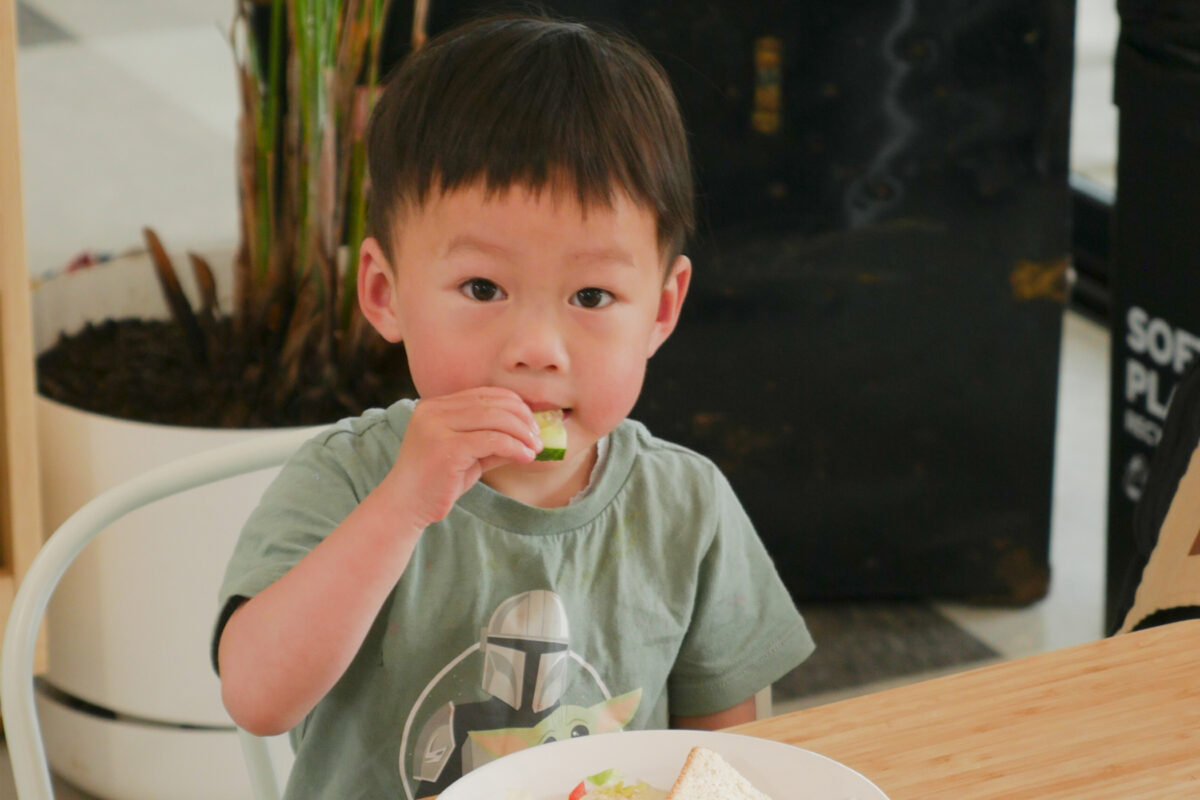
6. Remember – Entertainment is Key
When flying with toddlers, activities are a great way to spark excitement and – most importantly – serve as an educational distraction during those long flights. A little novelty goes a long way for a two-year-old and something as simple as a busy book, colouring activity, sticker book, or magnetic drawing board can do wonders for those long and sometimes arduous flights.
Many airlines provide free children’s packs that might contain some activity books and small toys. If you’re not sure, it never hurts to ask your flight attendant.
Additionally, while too much screen time can impact toddlers long-term, the occasional longer stint isn’t the end of the world – especially if it keeps your toddler calm and you sane on a long flight! If you find your toddler loves watching educational YouTube videos or colouring in on an iPad, try not to feel guilty – just be sure to bring toddler-friendly headphones.
7. Talk to Your Toddler Beforehand
As is the case with many toddlers’ outbursts, much of the anxiety arises from experiencing something unexpected. Therefore, if you leave your toddler in the dark, they won’t be mentally or emotionally prepared for the experience.
Instead, have a sit down and talk with your toddler about exactly what to expect. Map out the journey from packing to landing. It’s a pretty exciting and amazing experience for toddlers, so try and lean into the fantastical and exciting elements. Picture books are a handy way to build on the discussion and spark excitement:
- Maisy Goes by Plane by Lucy Cousins
- Hello World! Planes and Other Flying Machines by Jill McDonald
- Where Do Jet Planes Sleep at Night by Brianna Caplan Sayres
- Little World: At the Airport by Ladybird
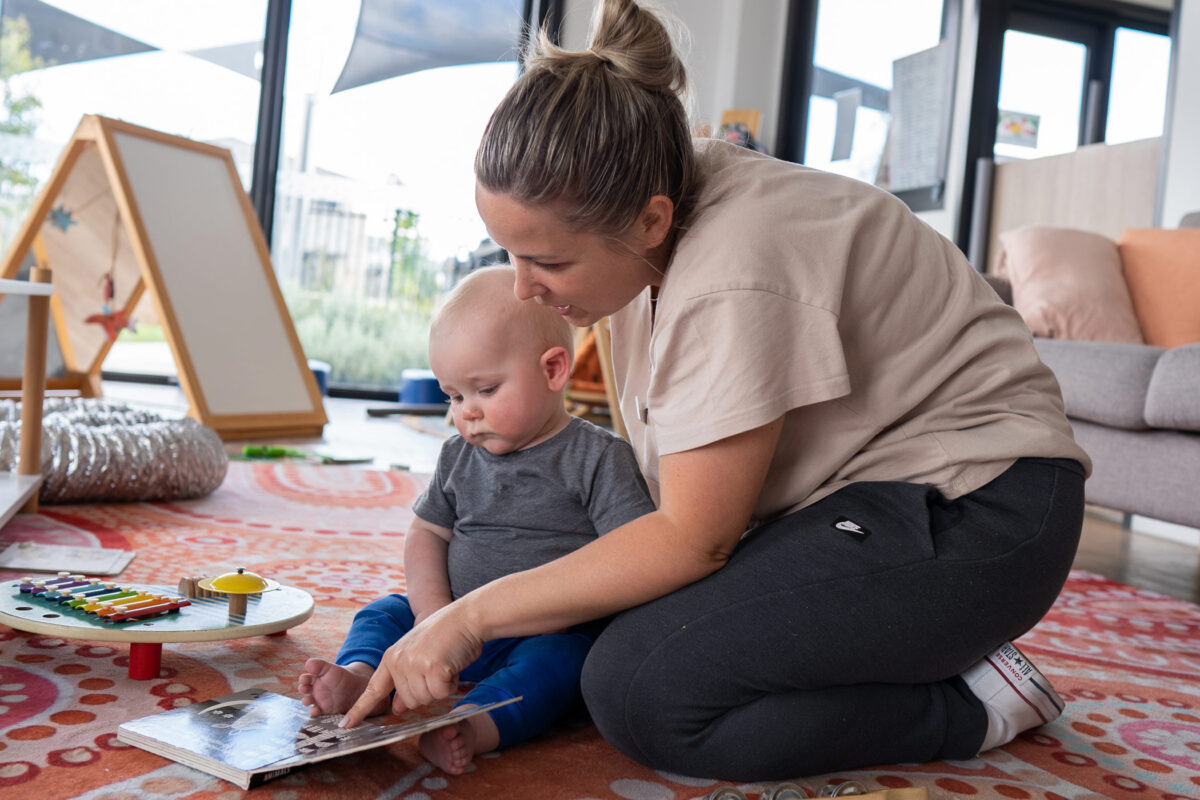
8. Board Last
Most airlines will invite families traveling with young children to board first. However, if you’re travelling with a partner or family members, have them board with your carry-on essentials first so you and your toddler can board last.
Simply put, your toddler will spend less time sitting down and strapped in. Additionally, the cabin can quickly feel a little claustrophobic for toddlers with all the noise and commotion of complete strangers talking and stowing away their carry-on baggage.
9. To Gate Check or Not To Gate Check?
While it’s tempting to baggage check your stroller or baby gear, opt for gate checking if your airline allows it (be sure to research this beforehand). Gate checking a stroller or bulky baby gear will save you a lot of stress and worry as you won’t have to carry your toddler around after checking your baggage. Also, it’ll be waiting for you once you land.
Just be sure to tag your baby gear appropriately and to speak with the gate agent at the airport.
10. Stay Calm and Be Prepared
Be sure to anticipate that there may be challenging moments during the flight. However, instead of agonising over something that may not even happen, try and stay calm and be prepared for unexpected situations.
Bring a small first aid kit, extra nappies, and some changes of clothes in case of spills or accidents. Importantly, keeping calm fosters a positive and grounding atmosphere for both you and your toddler.
Ultimately, flying with a toddler doesn’t need to come with all the stress. With proper preparation, the right mindset, and plenty of patience, you can give your family the best chance of a cruisy flight this summer. After all, holidays are supposed to be for rest and relaxation! So, keep these tips and tricks in mind for a stress-free, memory-filled holiday season. Happy travels!
🍃 To tour one of our beautiful Centres, please click here. Otherwise, check out our website at Explorers Early Learning today!
One Small Step, One Giant Leap: Is Your Child ‘Ready’ for Primary School?
Reading, writing, and sitting still. That’s all there is to prep, right? Well, not exactly. Read on for our full breakdown of all the essential skills your child needs to thrive in prep and beyond 👇
The transition between early childhood education and primary school is an exciting and sometimes challenging time for parents and children alike. It marks the next step in your child’s educational journey, and their first foray into the formal schooling system.
But with all the talk of ‘school readiness’ and the Victorian Government’s upcoming ‘Pre-Prep’ program, how can you really know if your child is mentally and emotionally prepared for the big first day?
In this post, we break down the key developmental areas to keep an eye on in the days, weeks, and months before the first day of prep!
What Age Do Children Start Prep in Victoria?
In Victoria, children need to turn 5 years of age by 30 April of the year that they start school. Alternatively, children must be at school in the year that they turn 6 years of age – this is the compulsory school starting age.
Additionally, parents have several options for schooling depending on location, fees, religious preferences, and educational philosophy:
- Government schools
- Private schools
- Language schools
- Specialist schools
- Distance education
- Home schooling
More than Reading and Writing
Once your child is enrolled, it’s important to remember that the essentials for primary school extend far beyond reading, writing, and sitting still. Rather, children grow and develop in a number of key growth areas, such as independence, emotional maturity, and sociability.
Therefore, try a holistic approach to gauging your child’s ‘readiness’ for primary school. Every child is unique with individual skills, passions, and ways of learning. In other words, no two children are exactly alike.
So, get a feel for your child’s development in the following areas, and be sure to discuss these with your Kinder teacher leading up to the first day.
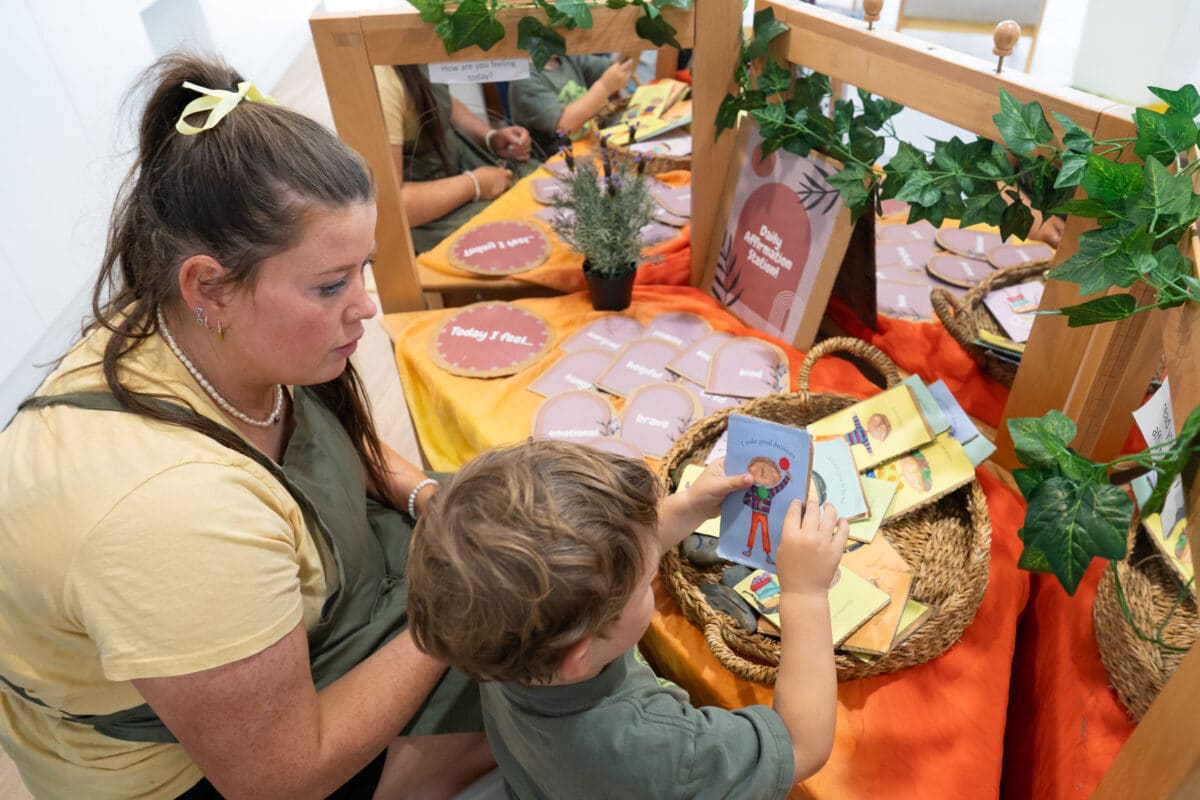
Social Skills and Independence
Is your child getting along with other children? Do they stand up for themselves or others? Sociability is a vital skill for children entering primary school, and one that experts suggest is improved with quality early childhood education. Social skills form the foundation of conversation, compromise, and relationship bonding.
Without established social skills, children may struggle to adapt to the primary school environment where children grow physically and psychologically with their peers. Some signs your child is displaying social skills leading into primary school include:
- Sharing toys
- Organising games and making friends on their own
- Role-playing as adults through games like ‘mummies and daddies’, ‘superman’, or ‘cooking’ in a dramatic play area
- Asserting themselves (even being a bit bossy!)
- Going to the toilet on their own (including using toilet paper properly and flushing the toilet)
Emotional Maturity
Can your child regulate their emotions with minimal adult intervention? Essentially, emotional maturity highlights a child’s ability to empathise and identify emotions in others, while also expressing their own in healthy ways – this doesn’t mean bottling everything up!
According to the Australian Early Development Consensus, children’s ‘ability to understand their emotions helps children to empathise with others.’ Therefore, children who display emotional maturity ‘can infer the feelings of others and respond in prosocial ways that demonstrate that they care for other people and value relationships.’
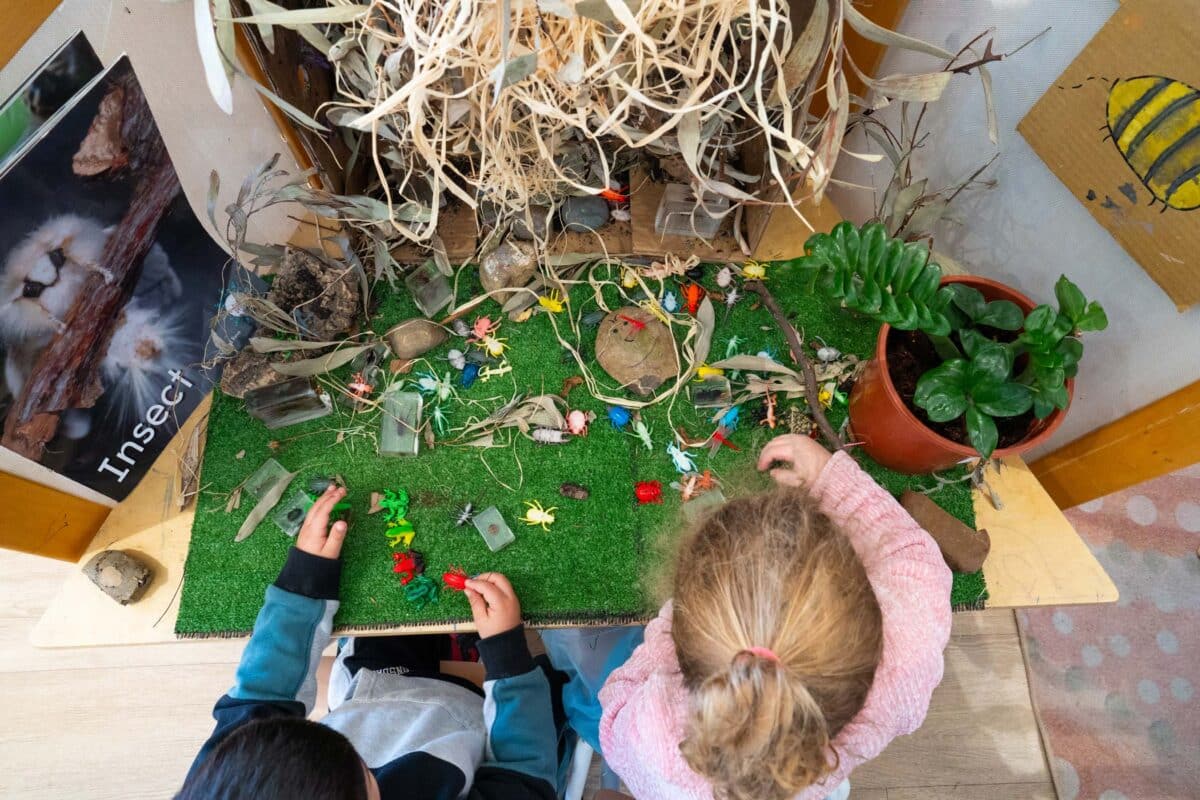
Language Skills
Language skills are so much more than a child’s ability to speak and enunciate their vowels. Rather, a vital component of language skills is children’s ability to listen and collaborate with others. These interpersonal skills equip children with the tools to:
- Express and understand complex emotions
- Think and learn for themselves
- Problem solve
- Develop and maintain long-lasting relationships
Cognitive Skills
Reading and writing are just two of the many cognitive skills expected in primary school. Cognitive skills strengthen children’s ability to absorb and critically analyse information, so it’s more than just remembering that two plus two equals four.
Rather, cognitive skills allow children to:
- Focus on mentally strenuous tasks
- Analyse information
- Compare and evaluate
- Problem solve
- Grasp cause and effect
However, it’s important to keep in mind that not all children learn at the same rate or in similar ways. Some children thrive with mathematical concepts, while others learn from artistic or abstract activities. Be sure to speak with your child’s Kinder teacher if you have any concerns.
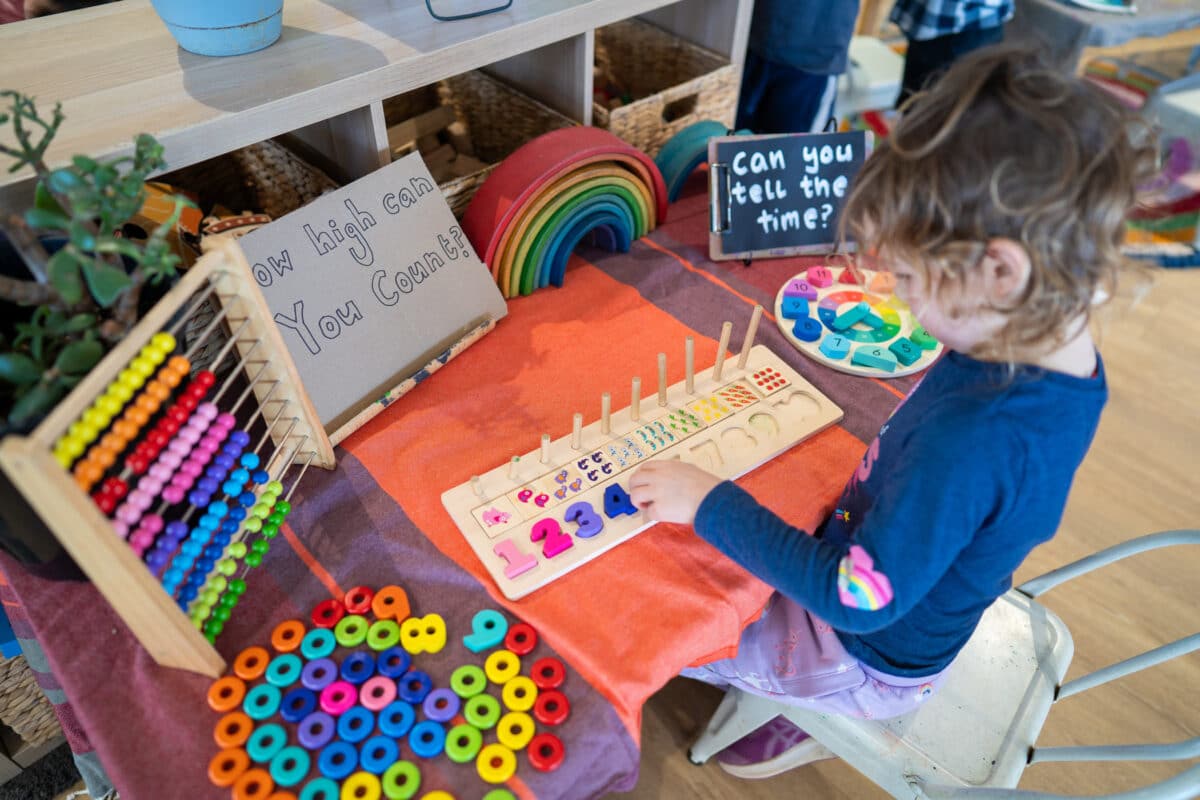
Fine and Gross Motor Skills
The ability to touch, feel, and manipulate objects is one of the most important skills for children. It’s an extension of their independence in a tangible, physical way. Therefore, children’s fine and gross motor skills are vital for success in academic and social development.
According to the Early Years Learning Framework, ‘Physical activity and attention to fine and gross motor skills provide children with the foundations for their growing independence and satisfaction in being able to do things for themselves.’
In other words, children need to interact with the world around them, whether that be through drawing, writing, moulding, solving puzzles, or playing with toys.
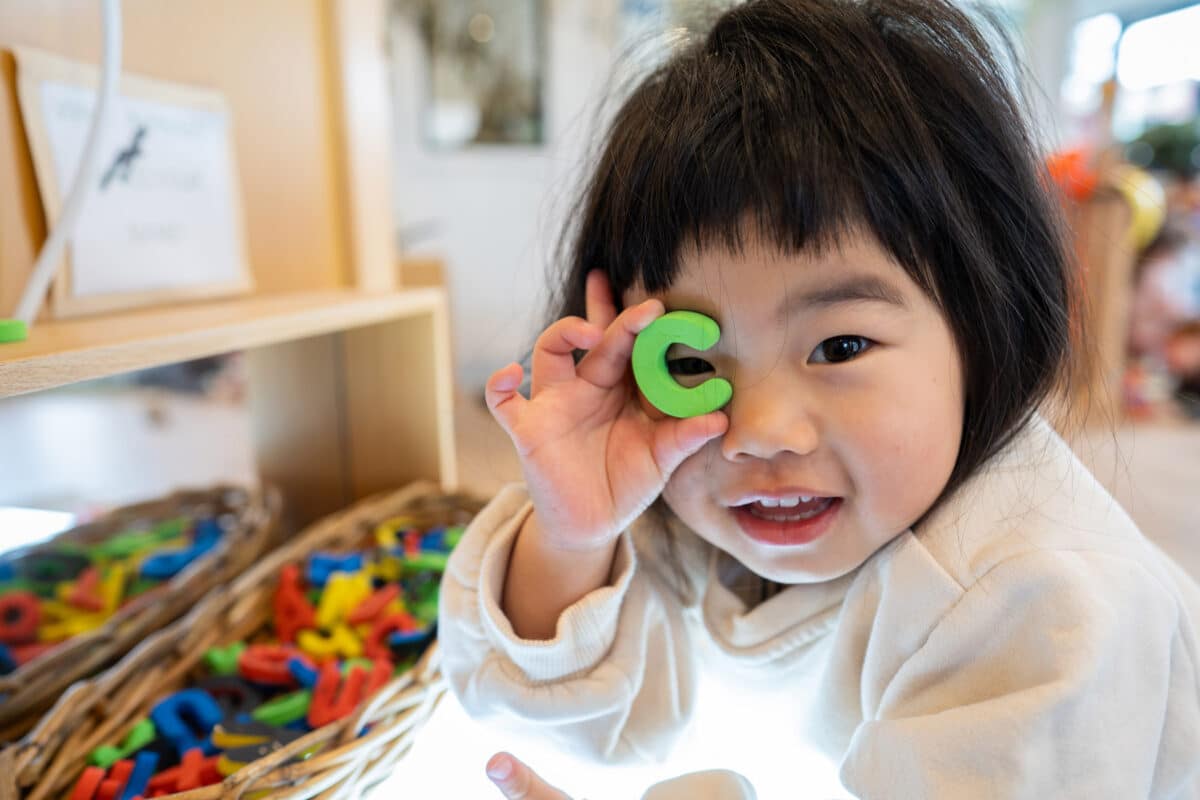
Ultimately, as your child embarks on the exciting transition from Kinder to primary school, it’s vital to consider readiness beyond academics. Social skills, emotional maturity, language proficiency, cognitive abilities, and motor skills all contribute to a well-rounded preparation that’ll ease those first day worries. Therefore, nurturing these aspects ensures a smoother transition and sets the stage for a fulfilling educational journey and a lifelong love of learning.
🍃 To tour one of our beautiful Centres, please click here. Otherwise, check out our website to register your interest at Explorers Early Learning today!
Why Nutrition is Everything for Toddlers
Is your toddler getting all the nutrients, vitamins, and minerals they need? And what do they need anyway? In this post, we break down why a well-balanced diet is everything for toddlers 👇
A balanced diet with all the necessary macronutrients (protein, carbohydrates, and fats) and micronutrients (vitamins and minerals) are the building blocks of a healthy body and mind. After all, there’s a reason you heard ‘if you don’t eat your veggies, you won’t grow up big and strong’ as a child on repeat.
Therefore, it’s vital to embed healthy eating habits and proper nutrition from an early age to ensure the best chance for success later in life.
In this post, we break down why nutrition is everything for toddlers. We’ll also provide some handy tips to get your toddler eating their fruit and veg!
How Much Protein Does my Toddler Need?
Toddlers need around 13g of protein daily, or roughly 15-25% of their diet. Protein is a vital macronutrient as it contains essential amino acids. While you’re probably familiar with its muscle building effects, protein is a part of every cell in the human body! It builds and repairs skin, nails, and even hair. Additionally, protein helps maintain a healthy weight, curb hunger, and repair injuries.
Some high-protein foods for toddlers include:
- Lean meats
- Dairy products
- Poultry
- Fish
- Eggs
- Beans
- Tofu
- Seeds
- Nuts
- Chickpeas
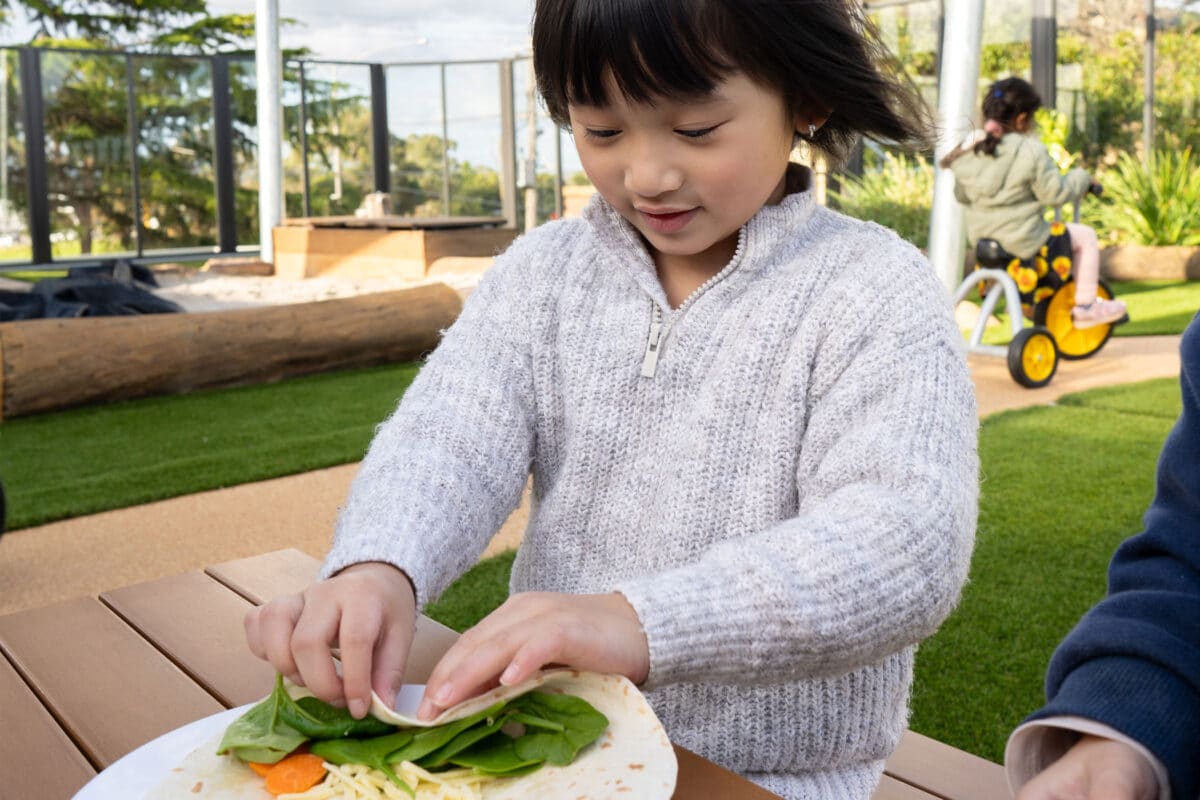
How Many Carbs Does my Toddler Need?
Paediatric experts recommend toddlers get around 45-65% of their diet from carbs. However, it’s essential to be mindful of the sources and quality of carbohydrates. Importantly, there are two types of carbs: simple and complex.
Simple carbs (or simple sugars) contain only one or two types of sugar, while complex have many. Sugary foods, fruit, and soft drinks contain simple carbohydrates which are quickly broken down into energy. This is why you might find your toddler bouncing off the walls on a sugar high.
Conversely, complex carbs, such as starches and fibre, break down slowly as they’re made up of many chains of carbs. Therefore, complex carbs release energy slowly and are less likely to spike blood sugar, hence avoiding those dreaded sugar crashes.
While some simple carbs are naturally occurring, experts recommend avoiding processed foods and drinks with added sugar entirely for children under 2, and preferably well into childhood and adolescence. Instead, reach for whole foods to boost your toddler’s energy.
Foods rich in complex carbohydrates include:
- Whole grains (whole wheat bread, whole grain pasta, brown rice)
- Pulses (lentils, chickpeas, pinto beans, kidney beans)
- Starchy vegetables (potatoes, corn, peas)
How Much Fat Does my Toddler Need?
According to recent studies, fats should make up around 30-40% of a toddler’s diet. However, there are different types of fat to keep in mind, both healthy and not so healthy.
Firstly, there are two kinds of healthy fats. These fats derive from natural sources and should be consumed on a regular basis for brain function, hormone balance, and energy:
- Monosaturated fats (nuts, avocado, canola oil, olive oil, sesame oil)
- Polyunsaturated fats (fish, sunflower seeds, flaxseed oils, soybean)
Additionally, while not necessarily healthy or unhealthy, saturated fats should be consumed in moderation:
- Saturated fats (beef, pork, poultry, full-fat dairy products, eggs)
Lastly, trans fats (or trans fatty-acids) should be avoided entirely. In fact, the World Health Organisation recommends limiting trans fats to less than 1% of total energy intake. In several cities around the world, such as New York City, trans fats have been severely limited or outright banned and there’s a growing movement in Australia to follow suit.
Trans fats can be naturally occurring but are most often industrially made. You’ll find trans fats in highly processed foods which offer little to no nutritional value to you or your child. Additionally, a diet high in trans fat has been regularly linked to an increased likelihood of heart disease, stroke, and type 2 diabetes.
- Deep fried foods
- Fast food
- Commercially baked goods (cakes, biscuits, pies, muffins, etc.)
- Frozen food (pizza, nuggets, ice cream, etc.)
- Potato chips
- Butter and margarine
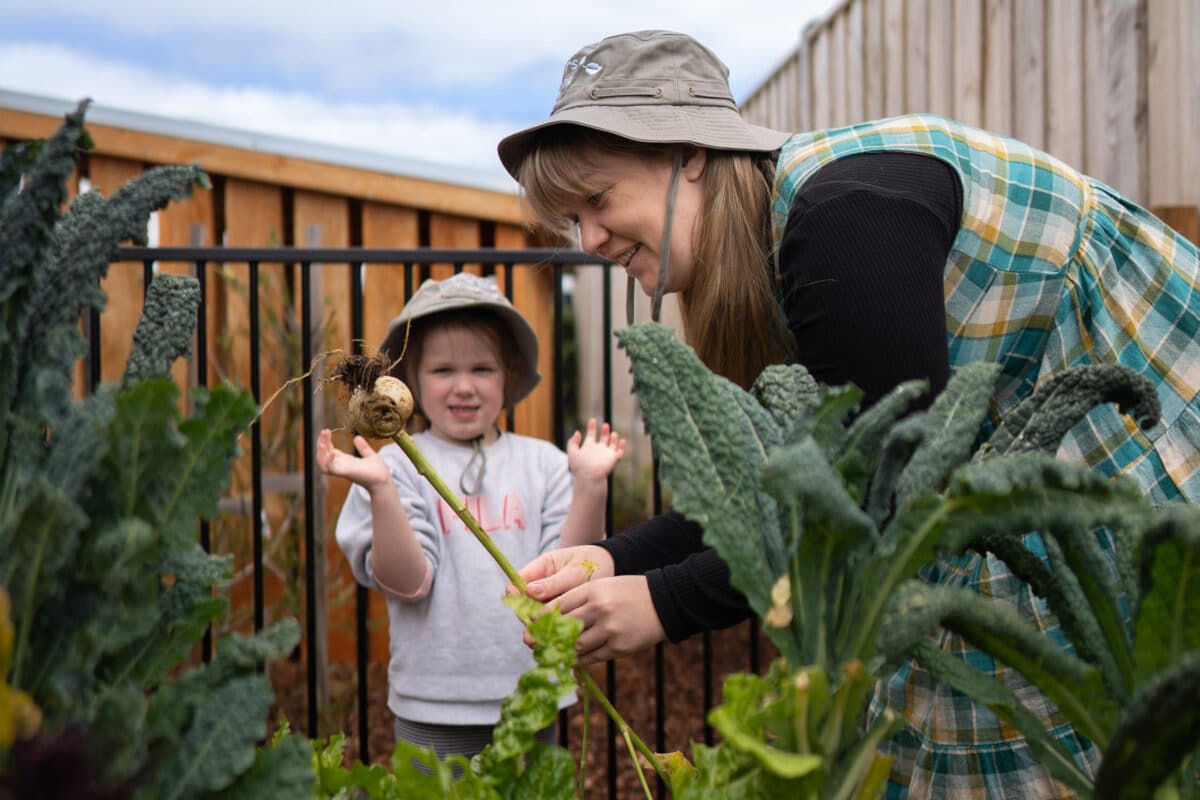
Micronutrients
What are the Essential Vitamins for My Toddler?
Vitamins are essential for toddlers to boost the immune system and strengthen cell function. Likewise, vitamin deficiency can lead to lower energy levels and may affect children’s development. Therefore, if you suspect your toddler may have a vitamin deficiency, consult your GP or a healthcare professional. Rest assured, these deficiencies are common and often easily treatable.
There are seven vitamins needed for healthy growth:
- Vitamin A (eggs, fish, sweet potatoes, spinach)
- Vitamin B (whole grains, poultry, fish)
- Vitamin C (citrus fruits, tomatoes, potatoes)
- Vitamin D (fortified milk and cereals, fatty fish, sunlight)
- Vitamin E (vegetable oils, leafy green veggies, nuts)
- Vitamin K (eggs, milk, broccoli)
- Folate (beans, fresh fruits, beans, sunflower seeds)
What are the Essential Minerals for my Toddler?
Minerals are key for building strong bones and teeth. While vitamins help the body’s functions, minerals help the body’s structure. Similarly, mineral deficiencies are also commonplace, especially with fussy eaters. So, be sure to contact a healthcare professional if you’re concerned and they can take the necessary steps.
Essential minerals include:
- Calcium (dairy products, fortified cereals, leafy greens)
- Iodine (dairy products, chicken, iodised table salt, seaweed)
- Iron (red meat, poultry, seafood, nuts, dried fruit, leafy greens)
- Zinc (beef, oysters, pumpkin seeds, rolled oats)
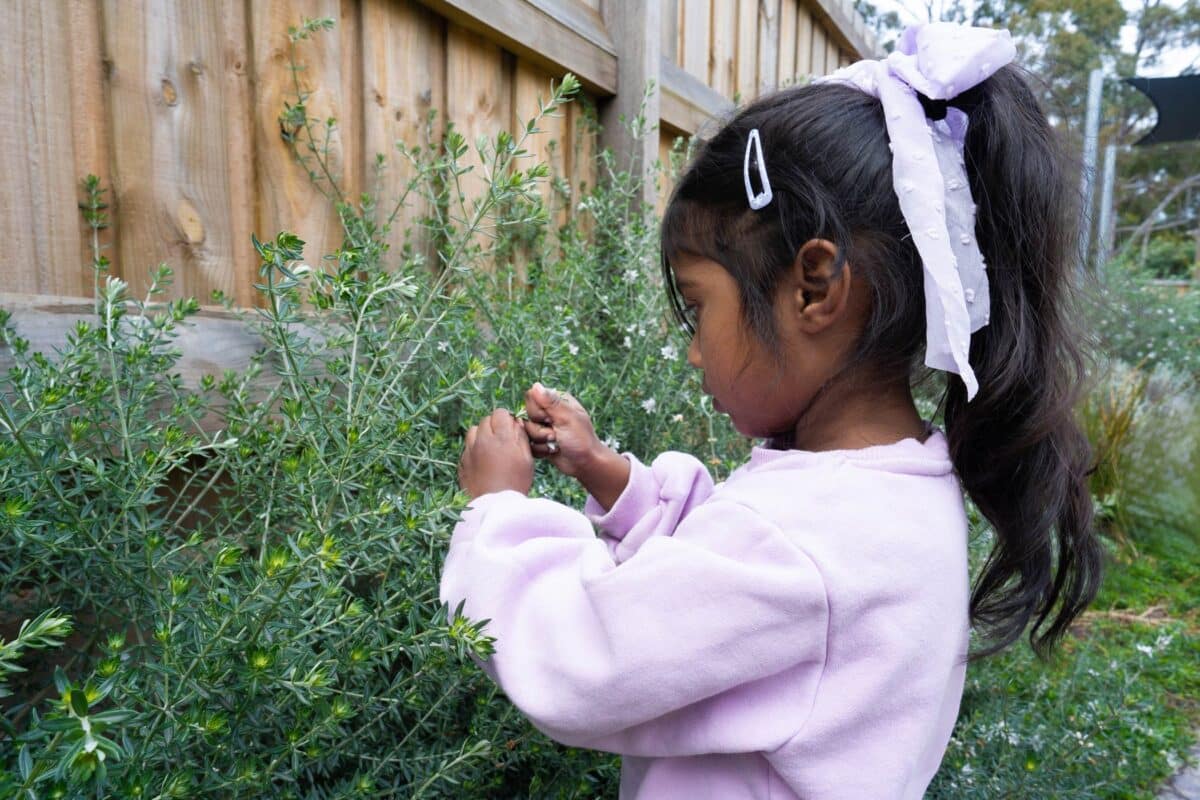
Tips to Get Your Toddler Eating Healthy
While it’s handy to know what your toddler needs to eat, for some the battle is just getting the food into their mouths in the first place. We’ve compiled a few handy tips to get your child eating more, and some ways you can incorporate healthy foods into healthy habits:
- Don’t serve too much – this one might sound obvious, but only serve what your toddler will eat. Forcing children to ‘clean their plate’ when they’re not hungry can impact their ability to read hunger cues, make healthy eating choices, and listen to their body. It also prevents food waste!
a) 1-2 year olds: let them decide how much they want to eat. Importantly, think about how much your child eats over the course of a week, rather than day-by-day. This is because toddlers appetite wanes often, which is okay!
b) 3-4 year olds: offer a wider variety of healthy foods. Likewise, give them the choice to eat or not, but be sure to include foods from the five food groups. - Offer variety – toddlers often refuse to eat as a way to express control. Therefore, food choices offer fussy toddlers a compromise. Something as small as choosing between mashed potatoes and mashed pumpkins can be a huge boost for a toddler’s sense of agency.
- Get creative with consistencies – dips, dips, dips! By using hummus, yogurt, or blended veg, you can make healthy eating a more fun and interactive experience for toddlers. Additionally, it’s an opportunity to strengthen fine and gross motor skills.
- Make a routine – children thrive off structure, so be sure to encourage family mealtimes at the same time every day (where possible) can ease stress and anxiety around mealtime.
Overall, getting enough macro and micronutrients is essential for babies and toddlers alike. Whether it’s for brain health, bone strength, the immune system, or making sure everything is working just right, a balanced diet is a must for growing bodies. With these facts and tips in mind, you can ensure your child is getting all the building blocks they need for a healthy and fulfilling life.
🍃 To tour one of our beautiful Centres, please click here. Otherwise, check out our website to register your interest at Explorers Early Learning today!
How to Introduce a New Baby to Your Toddler: A Complete Guide
Do you have another baby on the way? Whether your next bundle of joy is biological or adopted, a newcomer to the family is always a big event! Read on for our comprehensive guide to ensure the smoothest transition possible for your family 👇
Welcoming a new baby to the family is an exciting and emotional time for any parent. However, it’s important to take careful steps with how you break the big news to the ones it’ll effect the most – the children you already have.
While adults understand the gravity of welcoming a new child, toddlers may struggle to grasp the concept. Rushing the news may lead to children feeling overwhelmed, frustrated, and even jealous.
In this post, we outline how to introduce your toddler to a new baby, as well as providing some handy tips for helping them adjust after the arrival.
How to Introduce the Idea of a Biological Sibling
A little brother or sister is a wonderful addition to any family that will inevitably change the household dynamic. Therefore, it’s important to be mindful of when and how to tell your toddler. Experts suggest waiting until at least the end of the first trimester before telling a child there’s a new baby on the way. Once you’ve shared the big news, start preparing them for the actual arrival around 3-4 months before your due date.
While the ‘when’ can be straightforward (especially if you’re showing early), the ‘how’ differs from child to child. Just because your eldest took the news well, doesn’t mean your youngest will be as thrilled.
Likewise, every child is unique, and some struggle to understand abstract concepts. However, there are a few ways to help your toddler prepare:
- Read an age-appropriate book together about welcoming a new baby into the family. This is also best done in the weeks and months leading up to sharing the news so they’re well prepared. Some baby-themed books include:
i) What’s in Your Tummy Mummy? by Sam Lloyd
ii) I’m a Big Sister and I’m a Big Brother by Joanna Cole
iii) Bobo and the New Baby by Rebecca Minhsuan Huang
iv) There’s a House Inside My Mummy by Giles Andreae - Use animals and their young as a reference point – this is perfect if you have a puppy!
- Reassure them with praise and positive reinforcement.
For biological children, you can also use your baby bump! Once your child feels the baby kicking, they’ll begin to get their head around the concept. Ultrasound photos are perfect to extend this experience.
However, don’t be surprised if they find the idea a bit farfetched. Additionally, try not to take it personally if they laugh or shake their head. Often, they need to actually see the baby in person before they’ll believe you!
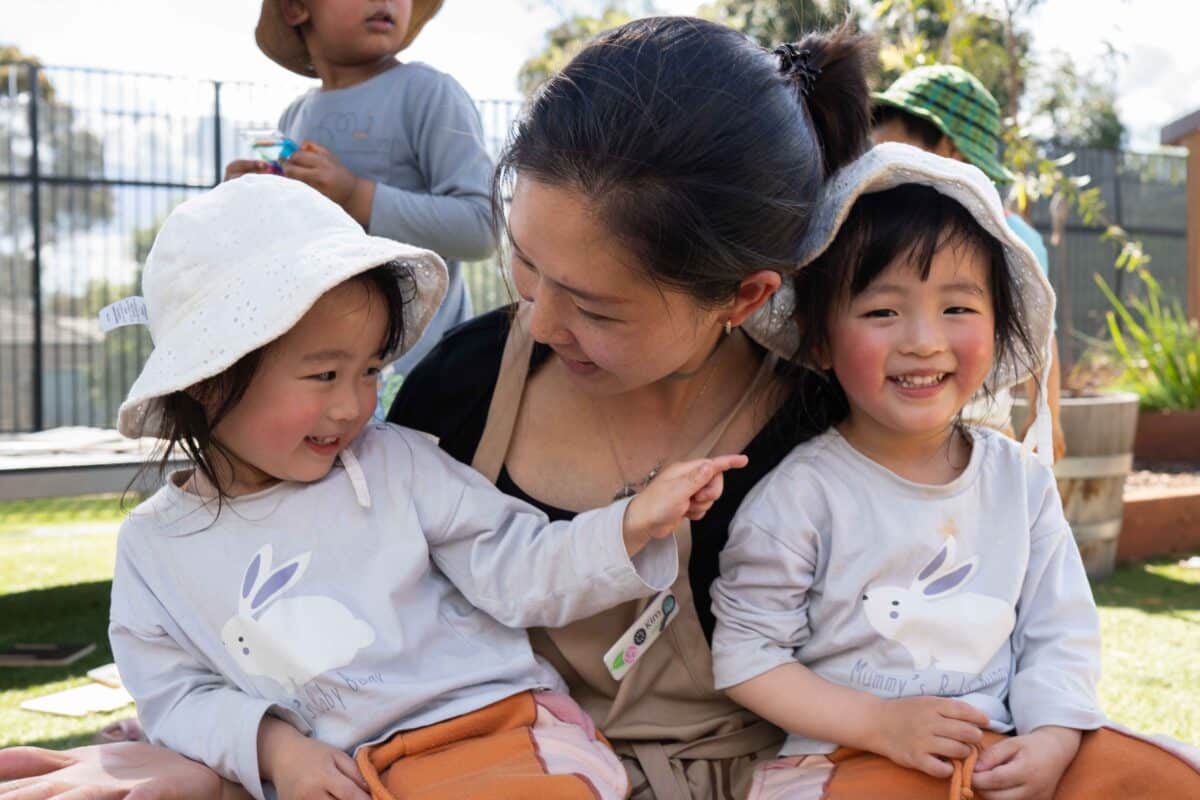
How to Introduce the Idea of an Adopted Child
Adoption is a huge life decision that can change many lives for the better. However, introducing an adopted child to your toddler presents new challenges. As you don’t have a baby bump or ultrasound photos, you’ll have to get creative to introduce the new face. This is further complicated by the fact they’ll need to understand that their new brother or sister comes from different parents.
A few tips to prepare your toddler for the incoming adopted child include:
- Reading children’s books on adoption together.
- Encouraging your child to ask questions.
- Being clear that all siblings will be treated and loved the same.
- Being open and honest – avoiding the topic can lead to confusion and anxiety for both you and your child.
Above all, children are more perceptive than you might think. So, if you’re shopping around for cots, loading up on formula, or looking at new baby clothes, they’ll clue in that you’re hiding something. Have a sit down and encourage a family discussion. They’ll likely have questions, so it’s important to be well prepared.
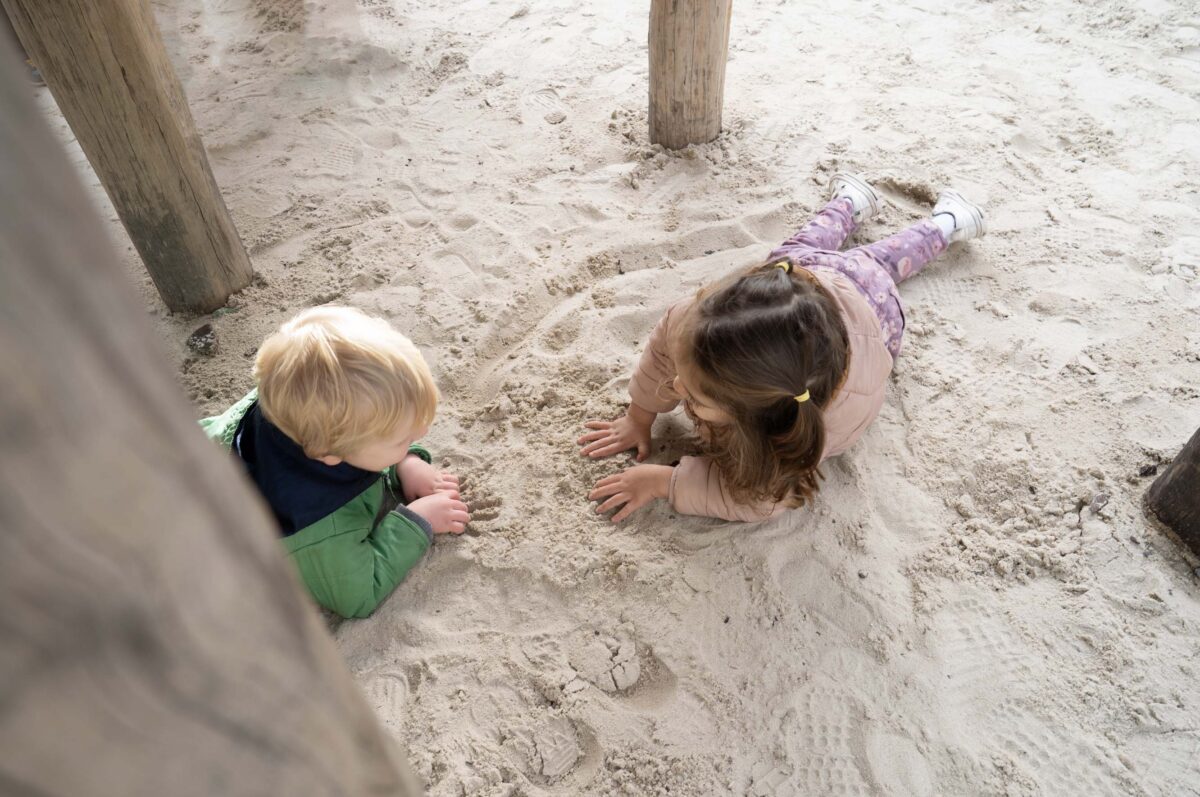
Bringing the Baby Home
When the baby finally arrives, there are some steps you can take to ensure your toddler doesn’t feel too overwhelmed:
- Give your toddler a big hug and lots of positive reinforcement before introducing the baby. This is vital for toddlers who often aren’t able to regulate their emotions.
- If you’re giving your older child a gift, tell them it’s from the baby. This is a great way to build connections between your children early on.
- If you’re having friends or family over for the occasion, encourage them to also bring something for your toddler so they can feel involved in the process.
- Hold the baby together. Start by asking if your toddler if they want to hold the baby, and don’t be surprised if they say no. They may even try to pinch or hit the baby. This is completely normal as toddlers may feel excited or overwhelmed. By holding the baby together, you can support your newborn’s head and take control if your toddler becomes uncomfortable or overwhelmed by the experience.
- Involve your toddler in caring for the new baby. Most toddlers love to help! Ask them if they would like to fetch nappies, pick out new sets of clothes, or even quietly sing to the baby if they’re upset.
- Spend some alone time with your child. If all eyes are on the baby, your toddler may feel left out. Taking some time to play a game or read with your toddler while another family member takes care of the baby can do wonders for your toddler’s self-esteem and mindset.
What to Expect at Home
After the initial excitement and novelty wears off, toddlers may still feel a bit lonely. Despite your best efforts to prepare them for the arrival, it can still come as a shock as you shower the baby with the time, love, and attention they need.
Therefore, some toddlers may regress in the first year after a baby arrives by:
- Crying or shouting
- Becoming (extra) clingy
- Acting out towards parents or the baby
- Refusing naps or struggling to sleep/settle
- Forgetting toilet training
Rest assured, these are normal coping mechanisms for toddlers. At first, they may even ask for the baby to be taken back or wish they never arrived in the first place. While this can be heartbreaking to hear, it’s a common reaction from toddlers.
If you find your toddler struggling to accept the situation, there are a few things you can do:
- Acknowledge their feelings. While toddlers aren’t old enough to fully grasp the situation, they are old enough to feel isolation and jealousy. It’s only natural that they feel like their world has completely changed because it has! So, be sure to validate their feelings. Something as simple as ‘I know you’re feeling upset right now, and that’s okay,’ can do wonders for toddlers.
- Schedule some alone time with just you and your toddler every day. This can be as simple as solving a puzzle or playing their favourite game. Just make sure that it’s something they love.
- Reinforce your unconditional love for all your children. While it may seem like it’s falling on deaf ears, the message will eventually get through to your toddler after enough repetition (and plenty of hugs).
- Be positive. This is perhaps the simplest, and in some ways the most challenging, tip on this list. With a crying baby and an emotional toddler, it can feel like the whole world is caving in. However, by staying as positive and smiling around your toddler, you can lead by example.
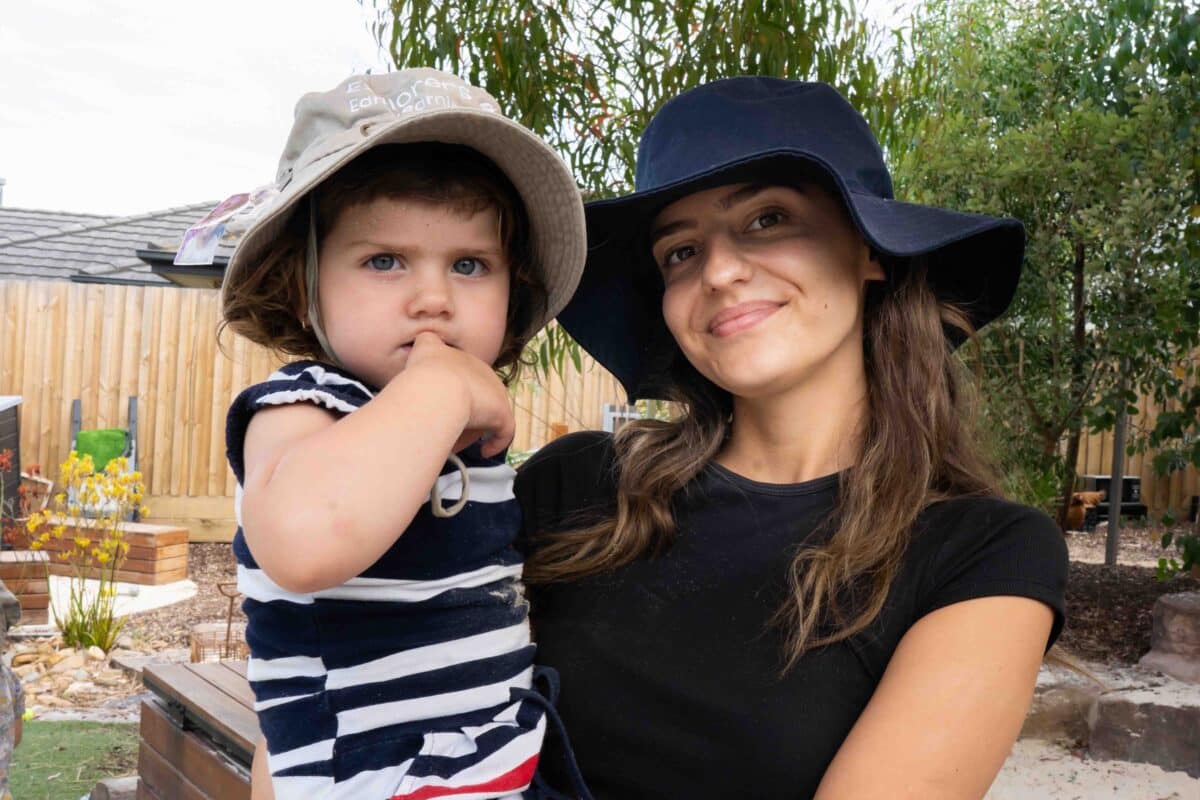
After enough love, time, and patience, your toddler will slowly begin to accept the situation. Before you know it, they’ll start to appreciate and love the baby. After all, they are their little brother or sister!
However, if you feel it’s seriously impacting your toddler’s development, be sure to contact your healthcare provider as soon as possible.
Overall, welcoming a new child to the family is an exciting and important period for any family. With careful and deliberate steps, you can ensure the experience is the start of a bright new chapter in your family’s story. Always remember to be open, honest, and be patient with your toddler. It’s almost always a shock at first, but with time and proper integration, your children will be forming lifelong bonds before your very eyes.
🍃 To tour one of our beautiful Centres, please click here. Otherwise, check out our website to register your interest at Explorers Early Learning today!
Reclaiming Calm: Strategies to Reduce Overstimulation in Children
Do you have a highly sensitive child? Are you having trouble calming them down? If so, read on for our full breakdown of overstimulation in children and some handy tips to boost your child’s mental and emotional wellbeing.
We live in a fast-paced world full of sights, sounds, and distractions. From new technology to endless entertainment, it’s no wonder that overstimulation in children is a common concern for parents.
But what is overstimulation and how can it be reduced? In this post, we look at the science behind overstimulation and list some everyday steps to reclaim the calm in you and your child’s lives.
What is Overstimulation in Children?
Overstimulation occurs when a child’s sensory experiences become overwhelming. This may be triggered by music, flashing lights, moving images, or just one too many adults at a party wanting to hold the baby.
Even a trip to the supermarket can be sensory overload for young children. Put yourself in their shoes; it’s full of bright lights, strangers, colourful products on the shelves, music in the background, announcements over the speakers, and all the while keeping mum or dad in sight.
Young children, especially toddlers, are in a tender phase of cognitive development. Therefore, their tolerance to stimulation is much lower than adults, causing their brains to become easily overwhelmed. This may lead to:
- Stress
- Anxiety
- Crying
- Mood swings
- Aggression (kicking or waving arms)
- Tantrums
With these signs of overstimulation in mind, here are a few easy steps you can take to ease children back into a calm state.
1. Create a Calm Home Environment
With so much happening outside the world, it’s important to control what you can – your home. Establishing a soothing atmosphere at home can do wonders in calming children after being out at social events, childcare or school, or even a swimming lesson.
Try to reduce distractions at home to allow children to unwind by:
- Turning off the T.V. and other entertainment devices (smart phones, tablets, laptops, etc.)
- Dimming the lights
- Playing soothing music
- Creating a calm corner in your living area or child’s room complete with soft toys, cushions, and age-appropriate books
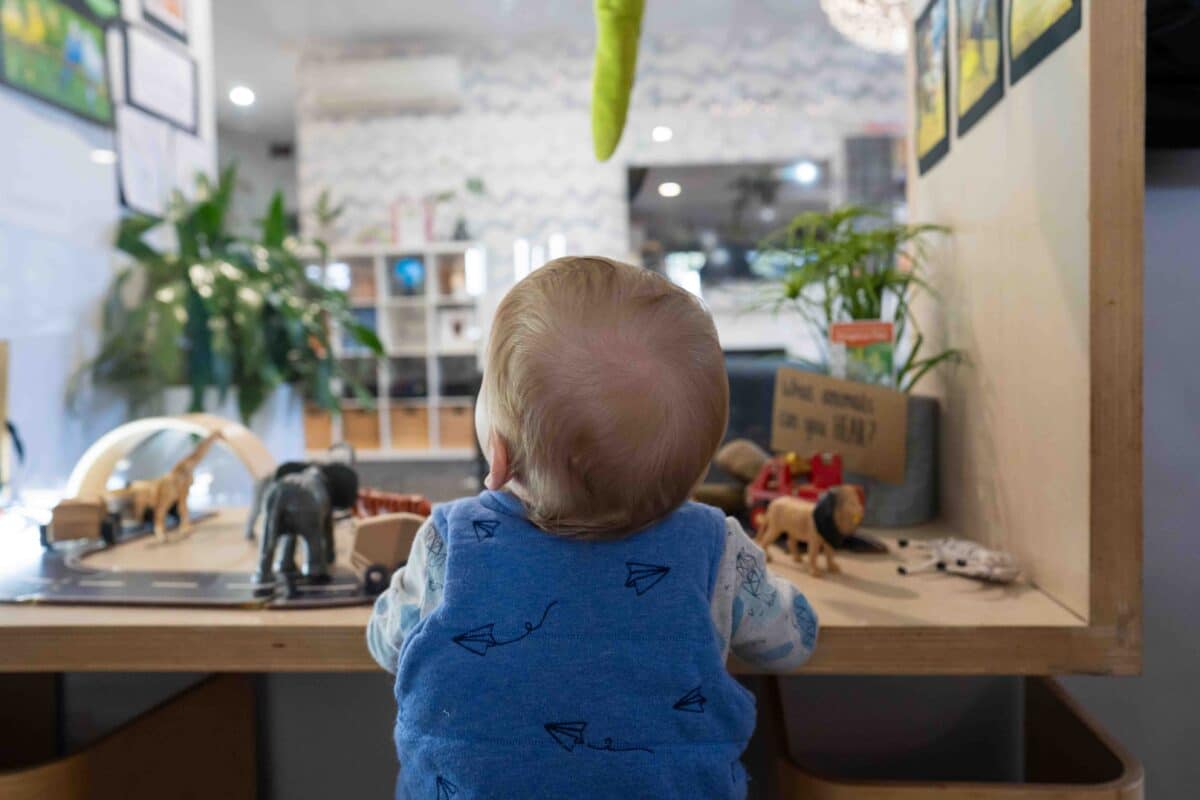
2. Establish a Consistent Routine
While your child will inevitably attend parties, family events, doctors’ check-ups, and school or daycare where the sensory activities aren’t always in your control, try to establish a consistent routine outside of them.
A clear structure provides children a sense of security. In other words, they’ll understand that before or after these potentially stressful events, there’s a predictable and reliable routine waiting for them. Try and establish a routine by:
- Designating set times for rest or play
- Verbally reinforcing routines, e.g. ‘we always read a story before bedtime.’
- Use a poster or chart to visually reinforce schedule
- Congratulate your child when they follow their routine, even it’s as simple as setting the dinner table or getting ready for school
3. Encourage Outdoor Exploration
Nature has a remarkably calming effect on children (and adults) of all ages. In fact, studies have shown that nature walks boost focus, relieve stress, and improve heart function.
Encourage your child to explore the great outdoors, whether it’s the beach, your garden, or just a stroll around the park. Outdoor play reduces stress, fosters a deeper connection with the environment, and highlights the importance of preserving our natural spaces for generations to come.
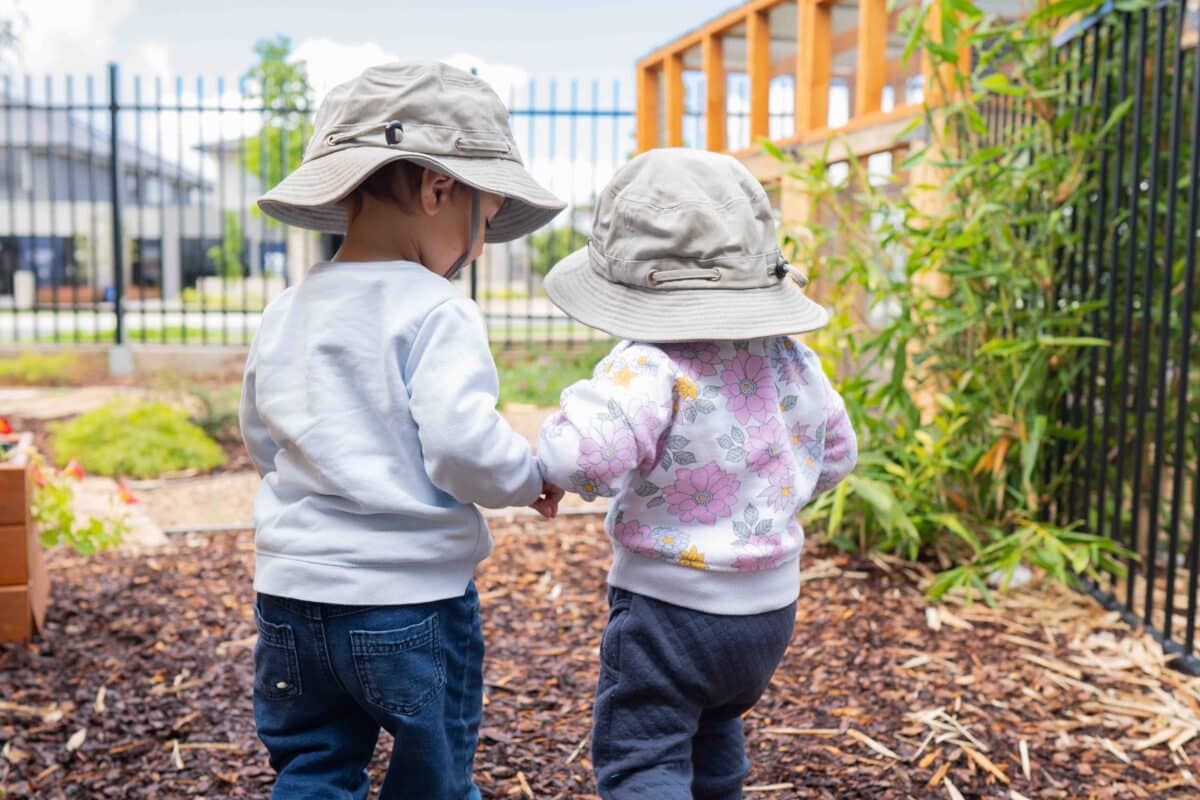
4. Limit Extracurricular Activities
While extracurricular activities offer valuable learning experiences, an overloaded schedule can lead to an overstimulated mind. And this isn’t just for toddlers. Too many extracurricular activities may do more harm than good for young children and teenagers alike.
Consider the much needed rest time for children if they’re involved in sports, dancing, after school care, childcare, or any other activities outside of school. Remember that there’s also time spent in the car, unwinding afterwards, and social interactions involved in these activities which can be emotionally and physically draining.
Children need rest and may take some time to recharge their social batteries. This is especially important if you have introverted children!
5. Foster Mindful Play
Mindfulness is simply being present in the moment. For children, mindful play is vital to children’s sense of community, mental well-being, and emotional resilience. Moreover, mindful activities have a tremendous ability to calm overstimulated minds.
Encourage activities such as:
- Yoga
- Sensory art
- Exploring the five senses
- Muscle memory exercises
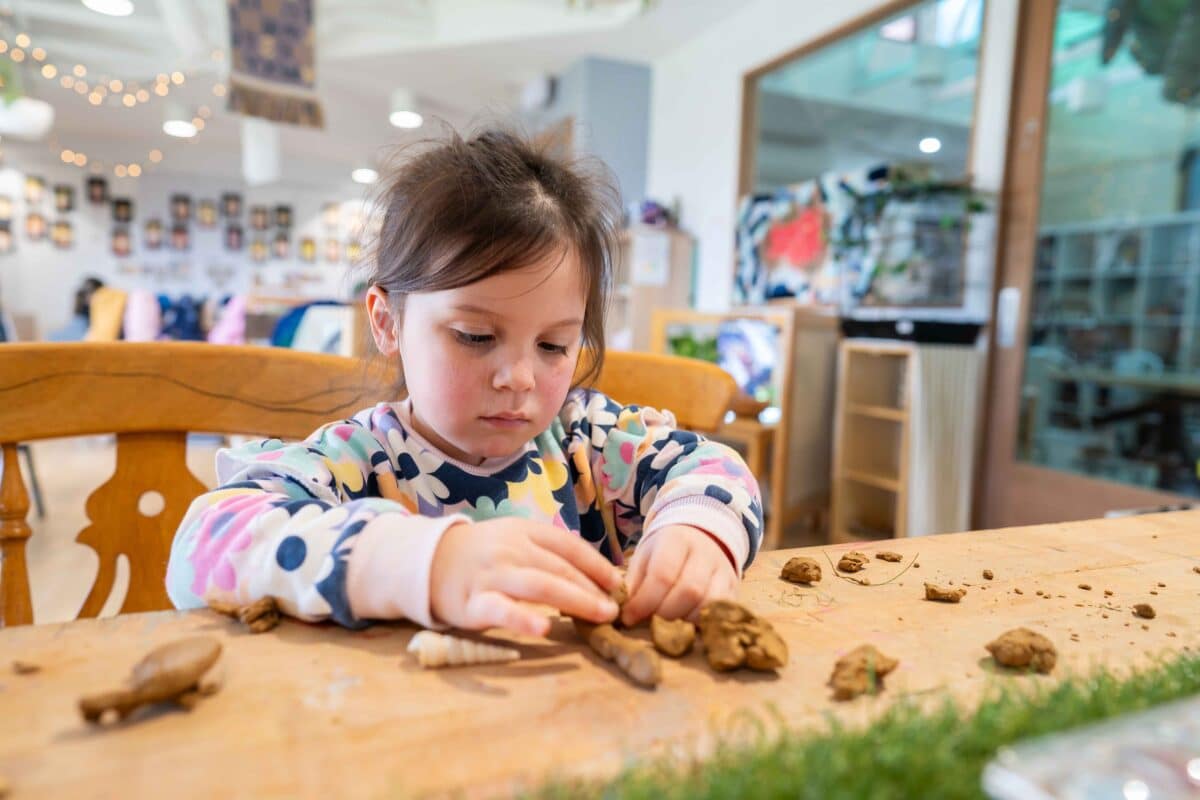
6. Listen and Communicate
Effective communication is key, particularly with school-age children as they navigate primary school and more complex social situations.
Pay close attention to your child’s emotional needs and anxieties, encouraging them to express themselves openly. Validate their feelings and unpack their concerns together. Something as simple as ‘it’s okay to feel like everything is a bit much sometimes’ as school workloads and social events pile up can make the world of difference. Remember, when children feel like they’re being heard, they’re more likely to work with you through developing healthy coping strategies.
7. Find the Right Balance
While it can be tempting to remove your child from stimulating activities altogether, it’s important to not go too far. Children need to experience the world, even when it’s uncomfortable. From learning life skills such as swimming lessons to navigating social cues at family events, children need to learn to cope with stressful and unpredictable situations.
Additionally, Jerry Bubrick, a clinical psychologist at Child Mind Institute, suggests the balance for school-aged children should be determined by how they affect their social life and everyday commitments:
‘Can you still do your homework? Can you still get 8+ hours of sleep each night? Can you still be a part of your family? Can you still hang out with your friends? If the answer is ‘no’ to one or more of these, then it’s too much.’
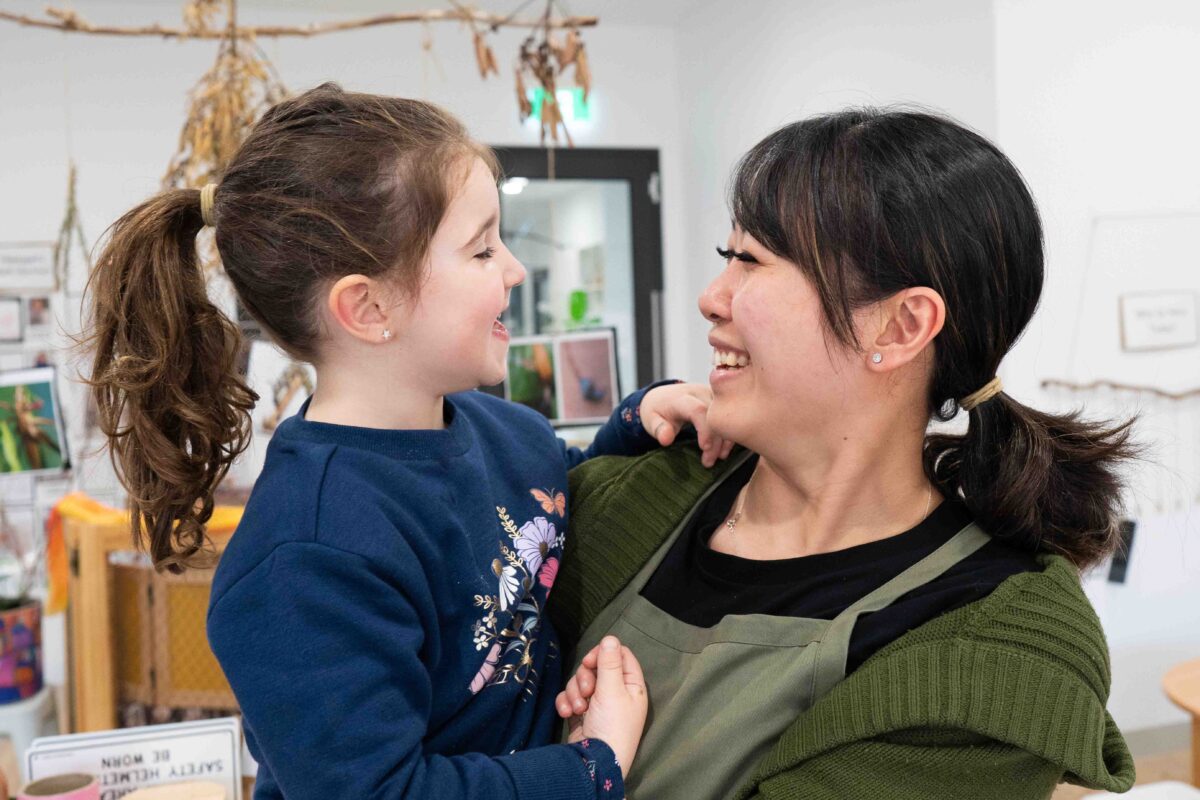
Overall, with these few simple strategies, you can help your child navigate through even the most overwhelming experience. Better yet, they’ll develop some handy coping skills along the way and come out the other side as resilient, strong, and level-headed in the face of our fast-paced, techy world!
🍃 To tour one of our beautiful Centres, please click here. Otherwise, check out our website to register your interest at Explorers Early Learning today!
How to Manage Sibling Rivalry: A Parent’s Guide to Peace
Whether it’s the last slice of pizza or who gets the window seat, sibling rivalry can get out of control fast. So be sure to check out our handy tips to get a hold of sibling rivalries before they turn into lifelong competition 👇
One minute they’re playing and laughing together, the next they’re in a screaming match. Sibling rivalry is an inevitable part of raising multiple children. While it’s most prominent between children less than two years apart, it can happen in any sibling dynamic.
While common, sibling rivalry can be challenging for any parent. Therefore, understanding its roots and how to manage it can lead to a happier and more peaceful household.
In this post, we’ll explore the dynamics of sibling rivalry, its underlying causes, and practical strategies for parents and caregivers to foster healthy relationships among siblings.
Is Sibling Rivalry Normal?
Sibling rivalry is a natural part of growing up. Brothers and sisters are children’s first peers. However, unlike in social situations or school, siblings often infringe on children’s most sacred spaces. In other words, the home.
This forces children out of their comfort zone. They’re forced to share, cooperate, and co-exist with another in areas that were once entirely their own. This often takes the form of sharing toys, food, attention, and space!
Children, especially toddlers, are territorial and experience what experts call the ‘mine stage.’ Therefore, having to suddenly share the back seat, play spaces, or even their room is a huge dynamic shift for children. And keep in mind that a new baby or stepsibling is effectively a total stranger to a child.
However, it’s an invaluable lesson that forces children to accept an inescapable fact of life – change. You can’t always control your situation or circumstances, and sibling rivalry forces children to accept this reality and develop coping mechanisms.
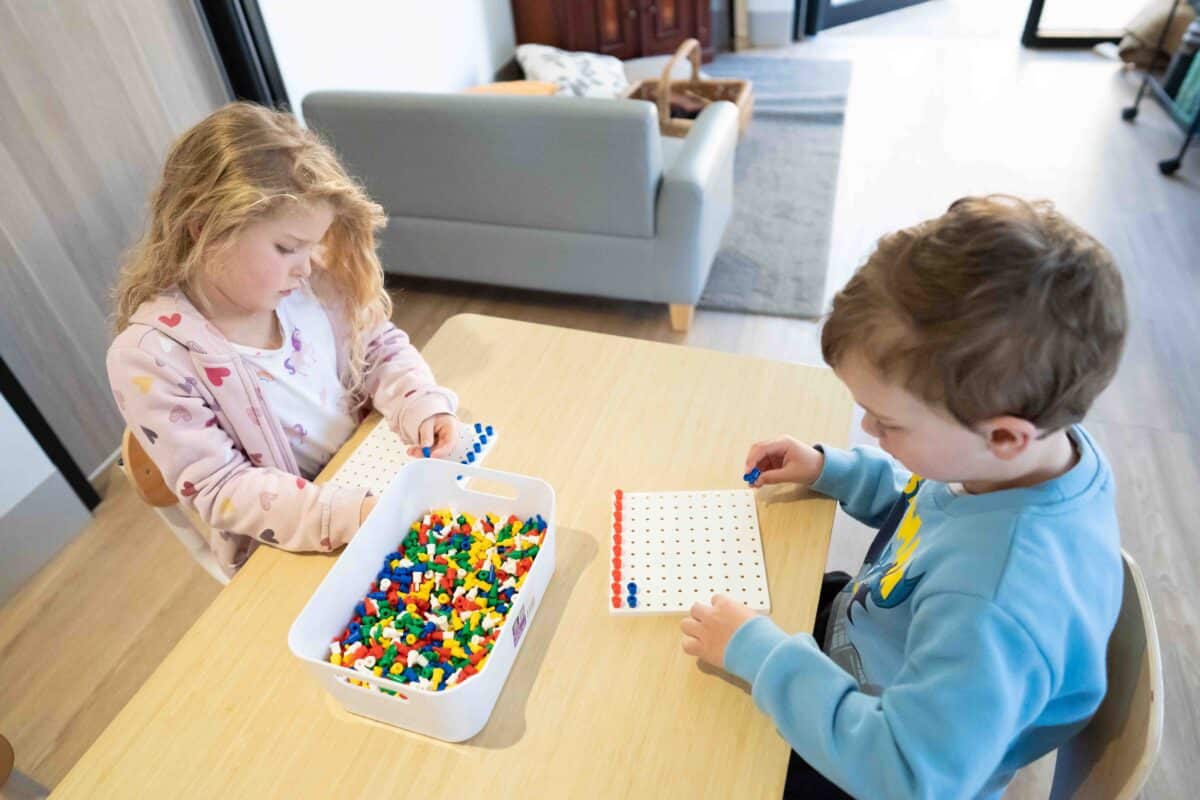
What Causes Sibling Rivalry?
While it can be easy to look at sibling rivalry from an adult perspective, try and put yourself in your child’s shoes. For their whole life, your child has been the centre of the universe. They’ve had food all to themselves, toys, and more attention than they could ever need.
Then one day, that all changes. They’re now forced to share and have their source of attention halved overnight. This is a huge and understandably jarring shift for children of any age. In some ways, it can feel like their entire routine has been split down the middle.
And as children get older, these feelings may intensify and grow more complex as children develop differing interests. Understanding that each child has unique needs can help address this, as well as taking a deep dive into the core causes of sibling rivalry:
- Competition for Resources – siblings may consider limited resources like toys, space, or parental time as their own, leading to rivalries when these resources are challenged or divided.
- Identity and Individuality – as children develop their identities, they may compete to establish themselves within the family or for parental approval.
- Developmental Differences – siblings of different ages have distinct needs, leading to competition as they grow and mature where one child may excel in areas while another struggles.
Effective Strategies for Managing Sibling Rivalry
With the causes of sibling rivalry in mind, where do you go from here? While you can’t wave a magic wand to stop sibling rivalry from occurring, there are many ways you can manage it.
1. Encourage Individuality
This is perhaps the most important step to preventing childhood sibling rivalries from growing into lifelong competition. If you’re child loves sports, wonderful! Get out and kick the ball together or sign them up for a local team. If they’re artsy and love to draw, terrific! Get creative with them and encourage this passion.
Importantly, don’t compare or label them purely on these passions. Empower them to thrive in their own special way by celebrating their achievements.
2. Avoid Labels
Have you ever found yourself calling one of your children ‘the sporty one’ or ‘the smart one’? While this may seem harmless, labels inevitably draw comparisons and may lead to inadequacy in children. If one child is struggling academically, seeing their sibling praised as ‘the brainy one’ may hinder their motivation and limit their potential.
Therefore, try to be mindful of the labels you’re using. It’s a natural habit in modern society to feel the need to label and categorise the world around us. It gives a sense of security and comfort to know exactly how things and people fit in. However, people (especially children) are full of complexity and need to have their sense of individuality nurtured from an early age.
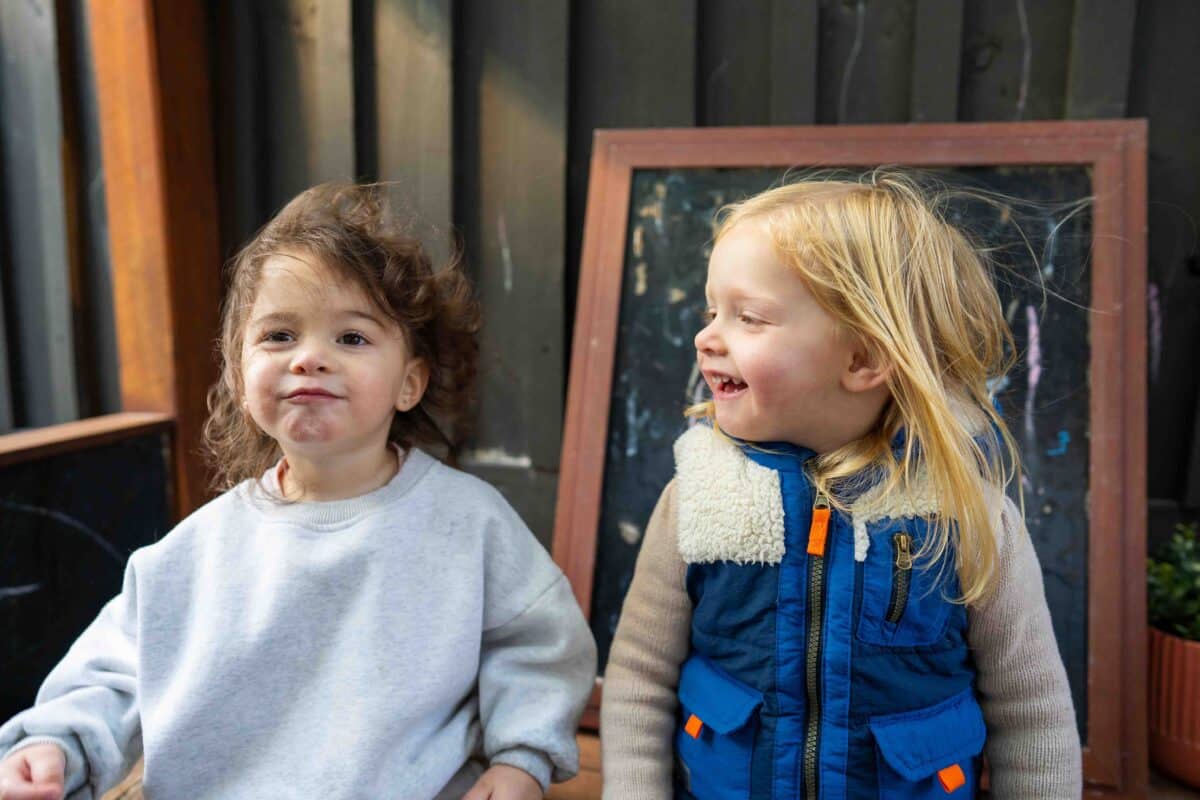
3. Stay in Control
No matter what you try, you’ll inevitably have to play referee between bickering siblings. However, children feed off your tone and body language. Therefore, joining the fight won’t exactly help to restore peace to the household.
Instead, try and remain as calm and neutral as possible – don’t play favourites! Over time, you’ll start to pick up cues for when a fight is starting to escalate into aggression and when you need to step in.
4. Set Clear Boundaries
Although sibling rivalries are often trivial and harmless, they can quickly cross the line into physicality. Be sure to be clear and assertive if siblings become aggressive, abusive, or violent with one another.
Set clear boundaries that respect and fairness are non-negotiables in the household and that physical violence is never the solution to an argument. Writing up house rules or having children sign a family contract can help to reinforce these values.
5. Be There to Listen
Emotional regulation is a vital lifelong skill for children. Likewise, fights between siblings often arise from perceived injustice. Therefore, sitting down with your child one-on-one after the conflict is a healthy outlet for children to express and articulate their feelings.
Children are far more likely to hear you out when they feel like they’re being heard and understood, rather than being told what to do. This will also aid in their emotional maturity and strengthen your bond with your child.
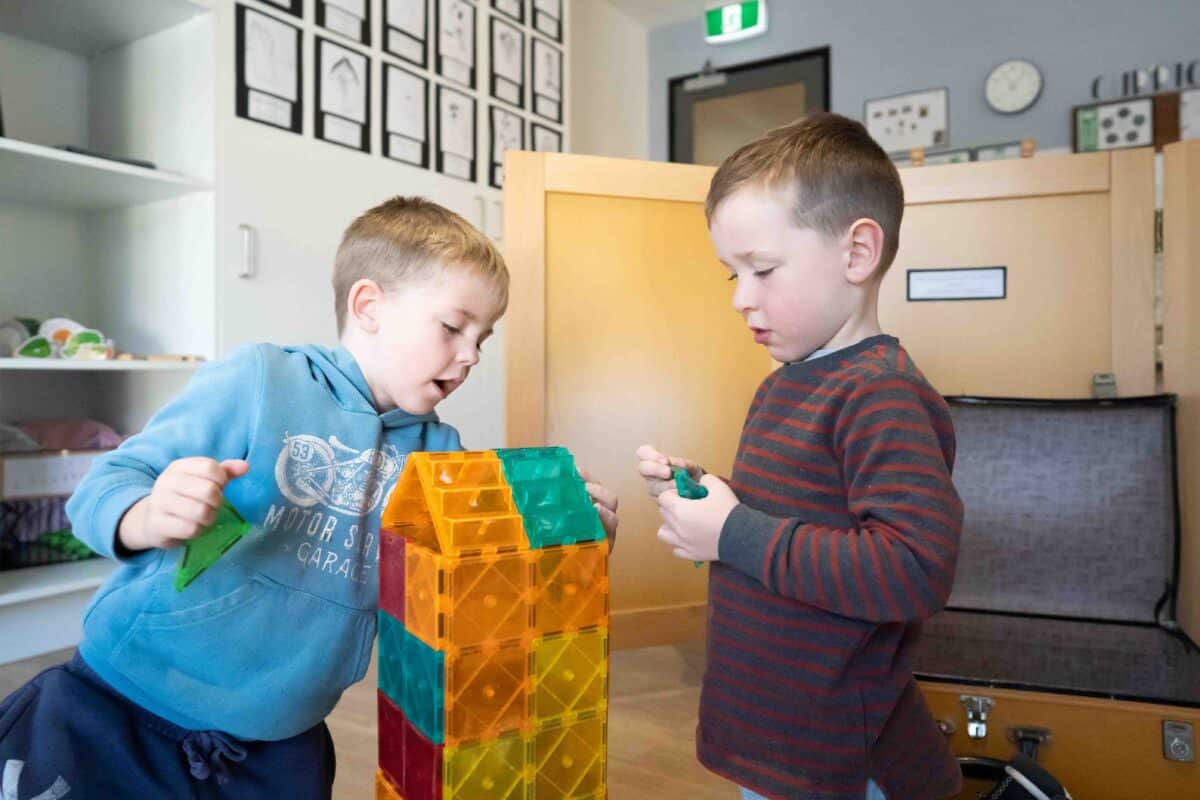
6. Quality Time with Each Child
Listening to your child isn’t always enough. Be sure to spend plenty of time one-on-one with your child engaging in their favourite activities, passions, or emerging interests.
While co-operation and spending time as a family is a must, it’s just as important to spend quality alone time with children. Talk with them, listen to their thoughts, and stimulate their budding curiosities.
7. Trust your Children
Despite all your best efforts, sometimes you have to let children work it out themselves. Of course, intervene if arguments become physically or verbally abusive. However, disagreements and discourse are a natural part of life and something your child will have to learn to navigate.
What may seem like a ‘fight’ may just be children using their problem-solving skills to resolve a conflict. This is an incredibly healthy sign for children as they learn to navigate social interactions and compromise. So be sure to congratulate children when they work issues out on their own – this is a huge developmental step!
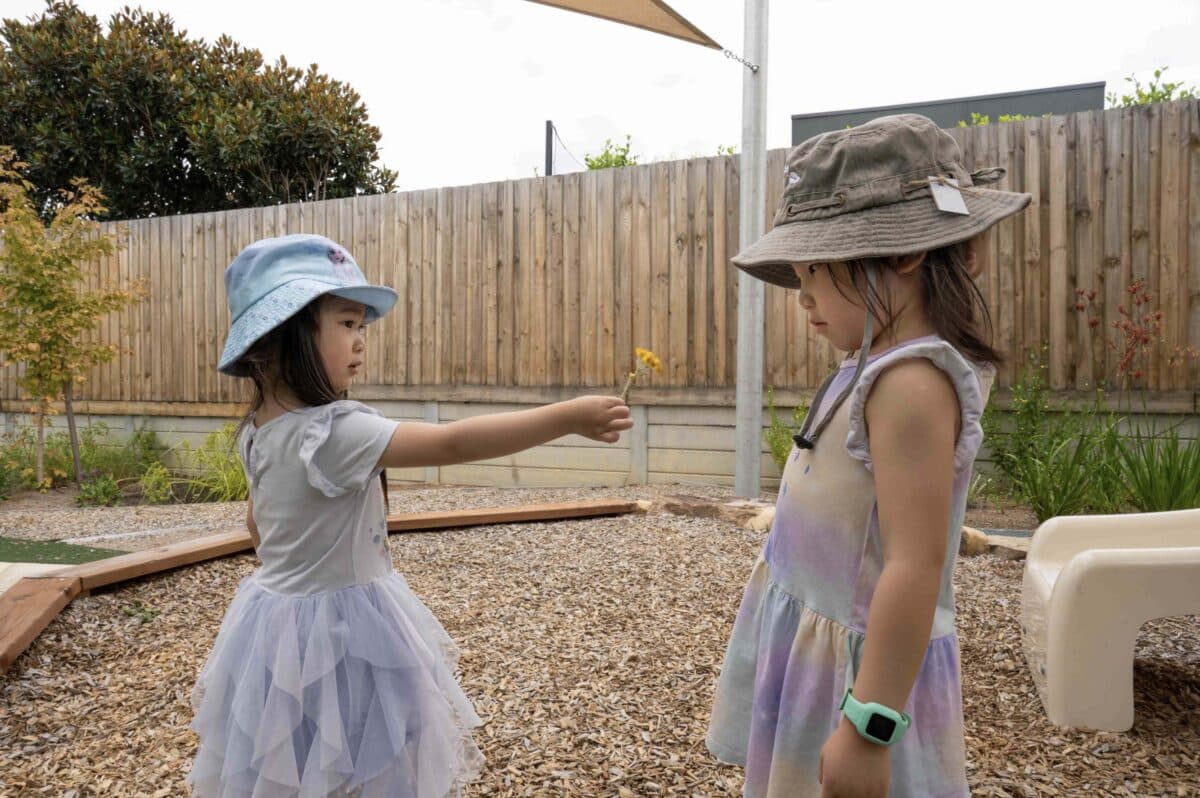
Overall, sibling rivalry is a natural part of growing up, but with the right guidance and approach, it can be a valuable learning experience for children and parents. By understanding the causes, benefits, and effective strategies for managing sibling rivalry, parents and caregivers can create a nurturing environment where siblings build stronger bonds, empathy, and lifelong bonds.
Remember, fostering healthy sibling relationships takes time and patience. As children grow and change, so will the dynamics of their interactions. The key is to provide a supportive foundation that allows them to navigate rivalry while building a lasting connection, even if you will have to endure the arguments over toy dinosaurs and imaginary injustices.
🍃 To tour one of our beautiful Centres, please click here. Otherwise, check out our website to register your interest at Explorers Early Learning today!
13 Must-Read Books for Book Week 2023
Read, Grow, Inspire. This year’s Book Week theme is all about fostering future creatives. To give your child the best start in their creative journey, check out our list of 13 must-read books for Book Week 2023 👇
Book Week has exploded in popularity in recent years with school and library events, activities, and dress-up parades taking centre stage. However, it’s important to remember the true purpose of Book Week which is, of course, reading!
This year’s Book Week theme – Read, Grow, Inspire – perfectly illustrates the importance of reading and engaging with stories from an early age. In fact, experts suggest that reading with toddlers promotes bonding and builds lasting relationships.
To celebrate Book Week 2023, we’ve compiled a list of 13 books that every child should read. The stories vary from rhyming cats to wombat stew, while also planning a costume or two!
1. How the Birds Got Their Colours by Mary Albert and Pamela Lofts
This Dreaming story is a wonderful introduction for children into the incredible world of Indigenous Australian culture. Mary Albert, a woman of the Bardi people, beautifully combines retellings of Dreamtime stories and children’s paintings to form a mosaic of Indigenous heritage.
If you have a passion for the more extravagant costumes, honour this important story by dressing your child as their favourite bird – just make sure to use plenty of colour!
2. The Very Hungry Caterpillar by Eric Carle
At just 224 words long, Eric Carle’s The Very Hungry Caterpillar has endured as a bestseller for over 50 years. Carle’s story cleverly teaches children the days of the week, counting, patterns, and healthy eating while also being a captivating read for adults.
The best part of this costume is its simplicity. All you need is a stripy green shirt and a few materials to make the crown. Alternatively, there’s plenty of The Very Hungry Caterpillar costumes in stores or online.
3. The Rainbow Fish by Marcus Pfister
One look at The Rainbow Fish proves it’s a book like no other. Pfister’s ingenious use of holographic foil for the shimmering scales meant this book was destined for greatness. But like the Rainbow Fish himself, it’s about what’s beneath the surface. Take a journey of self-discovery with your child and delve into The Rainbow Fish to learn all about sharing and the power of friendship.
Dress your child as the glittering Rainbow Fish complete with shiny scales, and use the opportunity to discuss the importance of kindness and generosity.
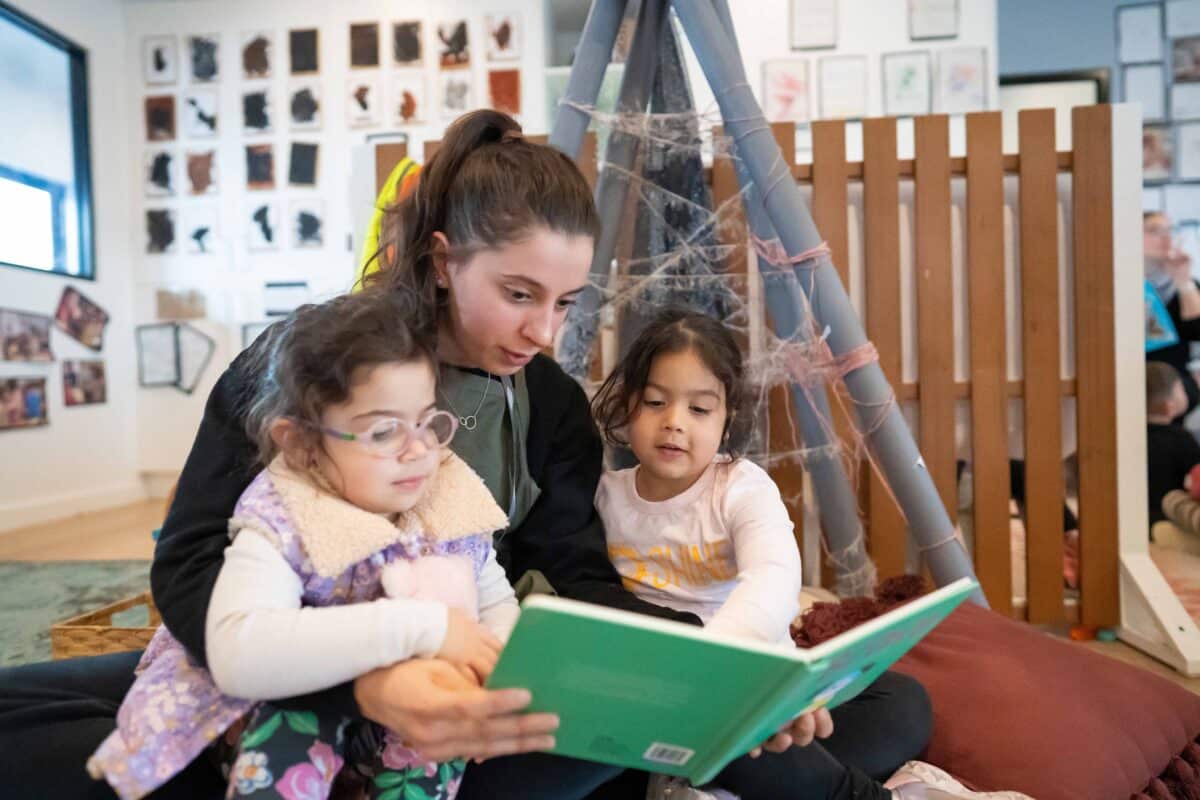
4. Wombat Stew by Marcia K. Vaughan and Pamela Lofts
Marcia K. Vaughan’s Wombat Stew seamlessly intertwines Australian wildlife into a story of teamwork, cunning, and whimsy. This is one to read aloud with its captivating illustrations and unique rhymes!
Grab a onesie and encourage your child to dress up as a mischievous wombat, a cheeky dingo, a friendly platypus, or any of the other Australian animals featured in Wombat Stew. The best part about this is it also reduces waste as they’ll get plenty of use out of a cosy onesie in the colder months.
5. Possum Magic by Mem Fox and Julie Vivas
Mem Fox’s enchanting tale of an invisible possum is an unforgettable celebration of Australia’s native wildlife and the need to preserve them. Even better, both Mem Fox and illustrator Julie Vivas are Australian, so you’re supporting local authors while enjoying this timeless Aussie classic.
Invite your child to dress up as Hush, the invisible possum, or her friend Grandma Poss. This is an opportunity to get creative with stars, face paint, and props!
6. Neil, the Boring Amazing Sea Cucumber by Amelia McInerney and Lucinda Gifford
Did you ever think you’d reach for a story starring a sea cucumber? This hilarious aquatic story is one for children and parents alike. Through deadpan delivery, plenty of puns, and smooth illustrations, this is one your child won’t soon forget.
The beauty of this costume is its simplicity – all you need is some glasses and plenty of green!
7. The Gruffalo by Julia Donaldson and Axel Scheffler
Take a stroll with a mouse in a deep dark wood. The Gruffalo endures to this day as a regular on children’s bookshelves, thanks to its clever turn of phrase, striking illustrations, and clever storytelling.
As for costumes, there’s so many animals to choose from in The Gruffalo! While a costume of the Gruffalo himself may be a bit too crafty for some, there’s plenty to work with for the mouse, snake, owl, or the silly old fox!
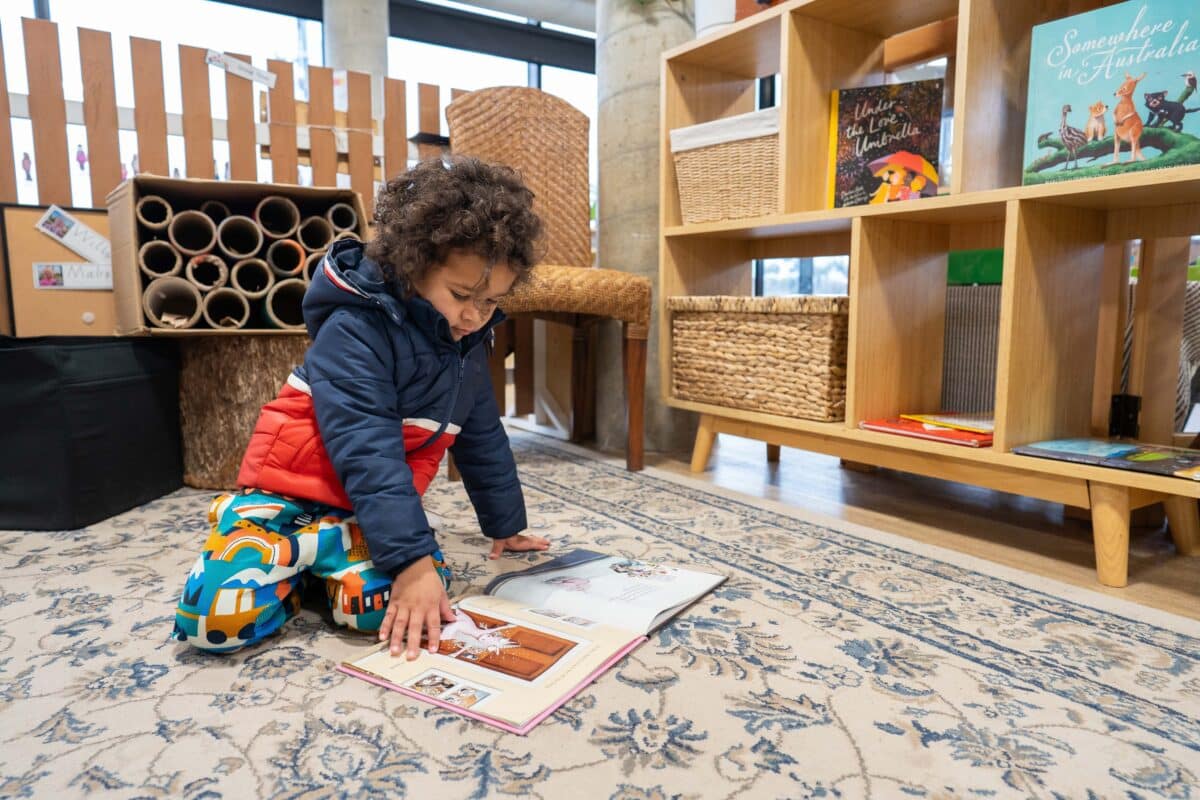
8. Diary of a Wombat by Jackie French and Bruce Whatley
Jackie French’s Diary of a Wombat took home the Young Australian Readers’ Award, Kids Own Australian Literature Award: Best Picture Book, and so many more. Like The Very Hungry Caterpillar, Diary of a Wombat cleverly teaches children the days of the week and even the times of the day.
Dress your child as Mothball the sleepy wombat – just be sure to bring plenty of carrots for props.
9. The Rainbow Serpent by Dick Roughsey and Percy Trezise
This Dreamtime classic is a must-read for children to broaden their understanding and appreciation of Indigenous heritage. The Rainbow Serpent is a cornerstone of Aboriginal traditions, with land rock art depicting the brilliant serpent more than 6,000 years ago!
To spread the word of this important cultural story, dress your child as the titular rainbow serpent! Just remember to be mindful and respectful of cultural traditions when dressing your child as this iconic figure.
10. Respect by Fay Stewart-Muir and Sue Lawson
This important book teaches children about the oldest living civilisation, the importance of respecting others, and the unending beauty of nature from the flickering stars to the red earth.
Dressing to convey the natural beauty of Australia fits for this wonderful story. From the scarlet robin on the cover to a cunning crow, there’s plenty to chose from in this moving tale.
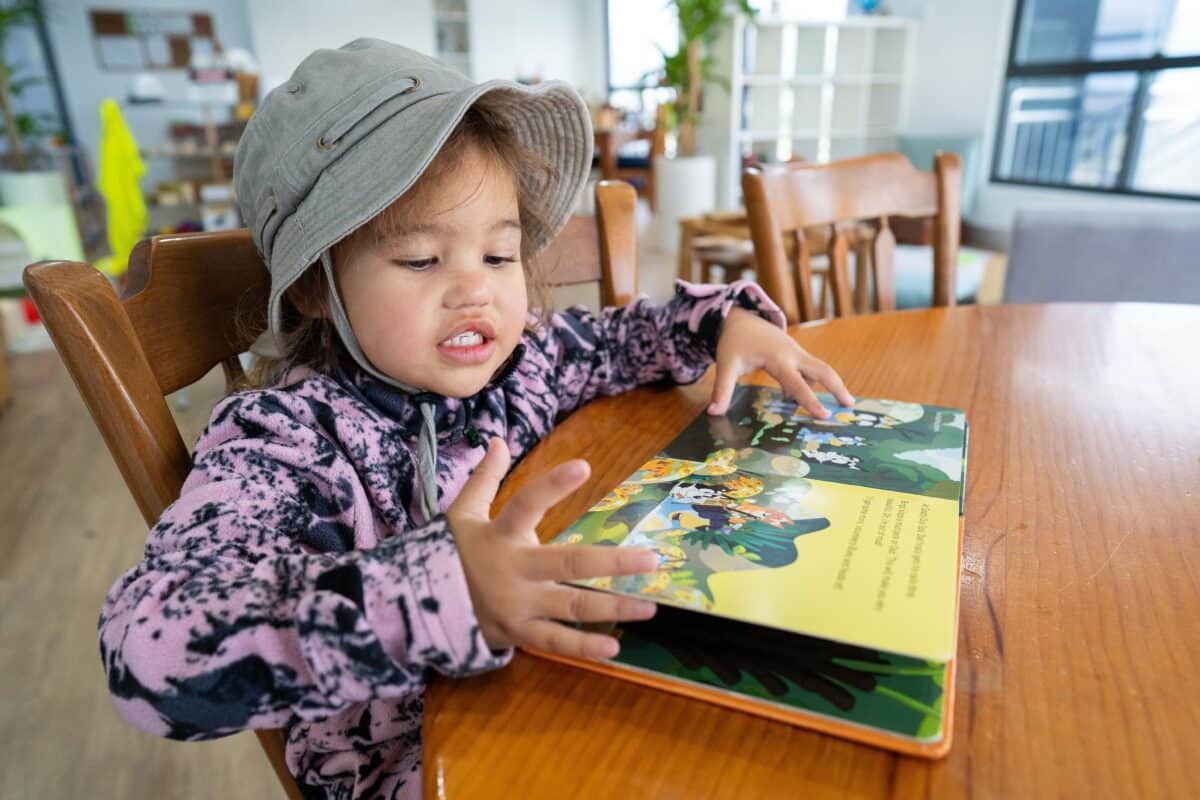
11. Where the Wild Things Are by Maurice Sendak
Despite being written in the 60s, Maurice Dendak’s Where the Wild Things Are has endured as a must-read children’s classic to this day. With a short film, an opera, a video game, and a feature length film based on the book, there’s a reason this story has remained in the public consciousness for decades (and showing no signs of slowing).
Encourage your child to don Max’s crowned wolf suit or go all out and make a Wild Things costume complete with horns, fur, and bulging yellow eyes. This one will make for some unforgettable snaps for the photo album.
12. The Cat in the Hat by Dr. Seuss
Today you are you, that is true. There is no one alive who is youer than you. We could have chosen from dozens of iconic Dr. Seuss quotes and tales, which really need no introduction. However, it’s hard to pass the iconic classic of The Cat in the Hat. This colourful masterpiece teaches children about counting, rhyme, and the virtue of honesty.
Get out the whiskers and grab a stripy red hat to dress your child as the mischievous Cat in the Hat and enjoy the rhymes together. Conversely, dress them up as any character in the Seuss books – just don’t forget the green eggs and ham!
13. The Tale of Peter Rabbit by Beatrix Potter
Beatrix Potter’s The Tale of Peter Rabbit regularly features in top children’s book lists, despite being written over 100 years ago! And this enduring legacy is for good reason. Few books have illustrated the dangers of adult life and the consequences of our actions quite like Peter Rabbit’s venture into McGregor’s woods.
Peter Rabbit, Mrs. Rabbit, Farmer McGregor; there’s so many costume choices from this wonderful book – just don’t be surprised if your little one wants a pet rabbit after this Book Week!
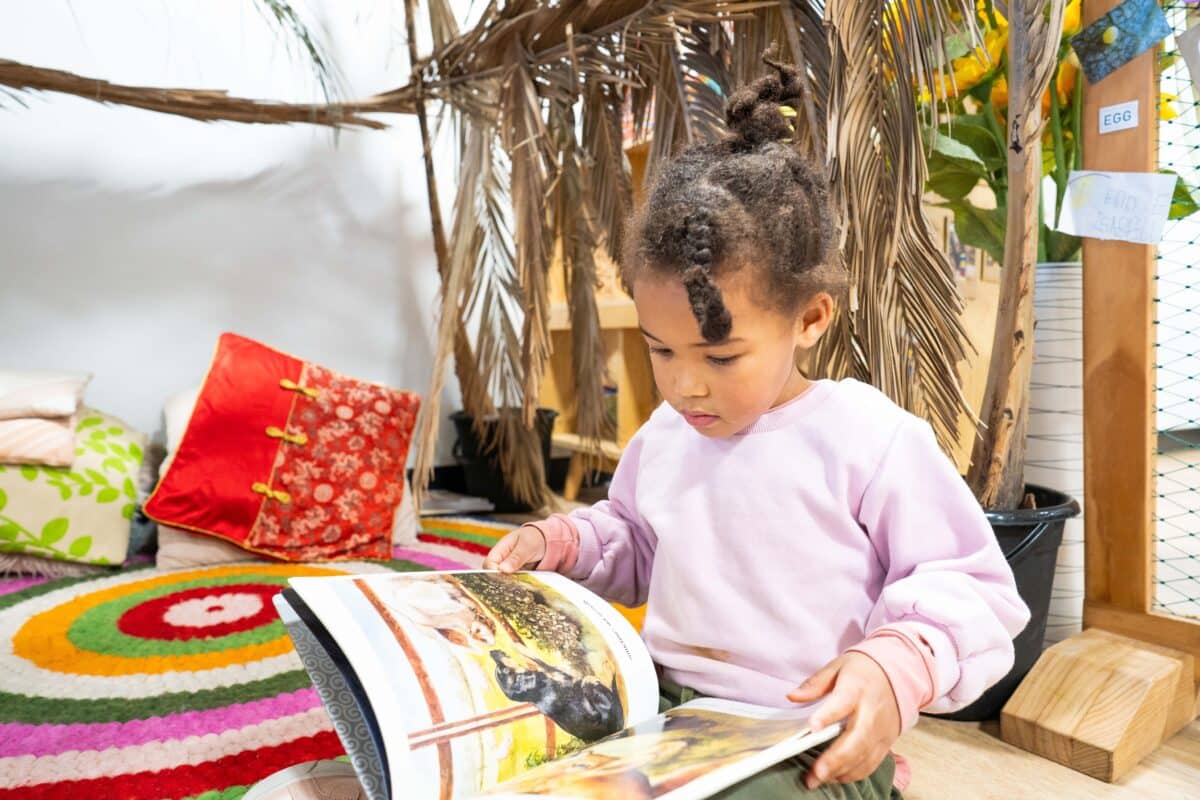
Why Is Reading Important for Children?
Whether your child is into the fantastical, the everyday, or a story about a sea cucumber, reading is essential for growing minds. In fact, the Children’s Bureau of Southern California outlines 7 key benefits for reading:
- Supported cognitive development
- Improved language skills
- Preparation for academic success
- Developing a special bond with your child
- Increased concentration and discipline
- Improved imagination and creativity
- Cultivating a lifelong love of reading
So, be sure to encourage your child’s reading and writing habits, no matter what the genre or style. Read widely and nurture their interests as they to progress from picture books to middle grade and young adult. And most of all, try not to stress over the Book Week festivities! The costumes and events are all in service of the real meaning of Book Week – to read, grow, and inspire.
🍃 To tour one of our beautiful Centres, please click here. Otherwise, check out our website to register your interest at Explorers Early Learning today!
How Much Screen Time is Too Much for Children?
Worried about your child’s screen time? Should they be on screens at all? Read on for our deep dive into the science of screen time, along with some handy tips to get your child experiencing the world 👇
Like it or not, computers, tablets, and smartphones are a normal part of growing up in 2023. While technology provides a world of possibilities for additional learning, too much screen time is regularly topping lists as the number one health concern among parents.
But how much screen time is too much? Should children use screens at all? In this post, we dive into the science behind screen time and provide our top tips to help your family in this increasingly techy world.
What Do the Experts Say About Screen Time?
According to AIFS (Australian Institute of Family Studies), screens should be introduced carefully to children:
- 0-2 years: no screen time – in the early years, screens provide too much stimulation for children’s rapidly developing brains. Therefore, health experts recommend avoiding screens entirely and to instead engage in sensory play, talking out loud, and reading.
- 2-5 years: one hour per day – at this age, children learn by imitating adults and exploring their environments. In other words, they need to experience the world around them. As screens limit children’s sensory experiences, they may develop ‘tunnel vision’.
- 5-17 years: no more than two hours per day – this will change as children enter high school and incorporate devices into their studies. However, during the primary school years, experts recommend two hours as the maximum for daily recreational screen time.
What Should Children Watch?
Although excessive screen time can be harmful, it can be beneficial in moderation. Just ensure that you’re always supervising your child during screen time and engaging in high-quality, educational content. This could be through interactive shows, animated stories, or apps.
Some of our top picks are:
- Sesame Street
- Bluey
- Ask the StoryBots
- Octonauts
- Alphablocks
- Numberblocks
- Vooks
- ABC Mose Early Learning Academy

How Can You Limit Screen Time for Children?
We recommend taking steps as early as possible to limit screen time. This will reduce the number of tantrums as children gradually develop screen-free habits. It doesn’t always have to be a strict rule, but everyday steps play a significant role in changing your child’s screen time habits.
1. Turn off the TV in the Background
Have you ever come home and turned on the television without even realising? Nobody’s watching it, so what’s the problem? Well, this background noise can be an unnecessary distraction for children which may lead to poor focus and shortened attention spans.
Additionally, televisions encourage passive viewing. In the early years, children need to be active. Whether it’s through physical activity or exploration, active play stimulates cognitive development, along with a range of other health benefits.
Try using soothing music or an age-appropriate podcast instead. Or, better yet, play nothing at all! Learning to sit with silence is an important skill for children to learn as they progress through life, particularly school, where there won’t always be a television or speaker to entertain them.
2. Set Rules for Screen Time
Children thrive on structure and routine. Therefore, establishing a screen time schedule reduces tantrums as children have a clear and defined timeframe for when screen time is allowed.
If you have older children, get them involved in the process. Hold a family meeting to decide which times work best for screen time. Once the whole family agrees, have them all sign a family contract. This will reduce future disagreements, while also introducing children to the importance of promises and sticking to your word.
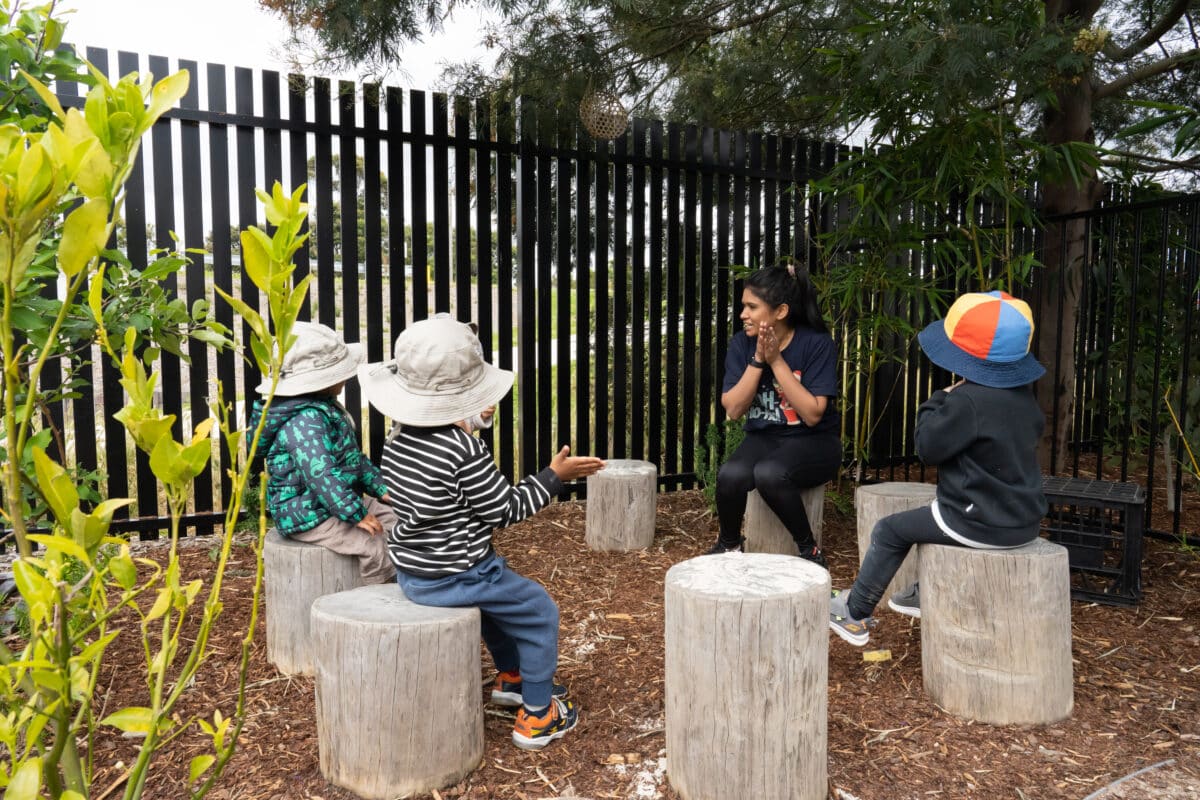
3. Introduce Screen-Free Days
You’ve heard of meat-free Fridays, but what about screen-free Fridays? Frequent screen time can overstimulate children, literally rewiring their brains and potentially leading to increased risk of developing attention deficit hyperactivity disorder (ADHD) and oppositional defiant disorder (ODD).
Therefore, try allocating days of the week, or entire weekends, to screen-free activities. You can then use these screen-free days to engage in family bonding.
4. Engage in Screen-Free Activities
Screen-free activities range from a trip to the museum to reading a book with your child. Anything to get them experiencing the world is a positive step in their development:
- Take a trip to the library or museum
- Engage in sensory play
- Go on a nature walk
- Read a book together
- Solve puzzles
- Play board/card games
- Engage in arts and crafts
- Get out into the garden
- Cook or bake a meal together
5. Set a Good Example
Children love playing grown-up. Whether it’s dressing up or making pretend dinner, children love acting like Mum and Dad.
Therefore, if your child sees you watching television, scrolling through your phone, or spending hours on your laptop in your spare time, they’re going to do the same. So, if you want your child to reduce their screen time, the tough fact is you’re going to have to as well!
Additionally, be mindful when using screens. Do you really need to scroll through your phone or are you just doing it out of habit? Likewise, you can also use this as an opportunity to educate your child about the purpose of screens and devices. If you work from home, have a discussion with your child about how you use your laptop for work or study.
Try to prioritise face-to-face interactions with your child. You might be surprised how much your child learns from something as simple as watching your facial expressions.
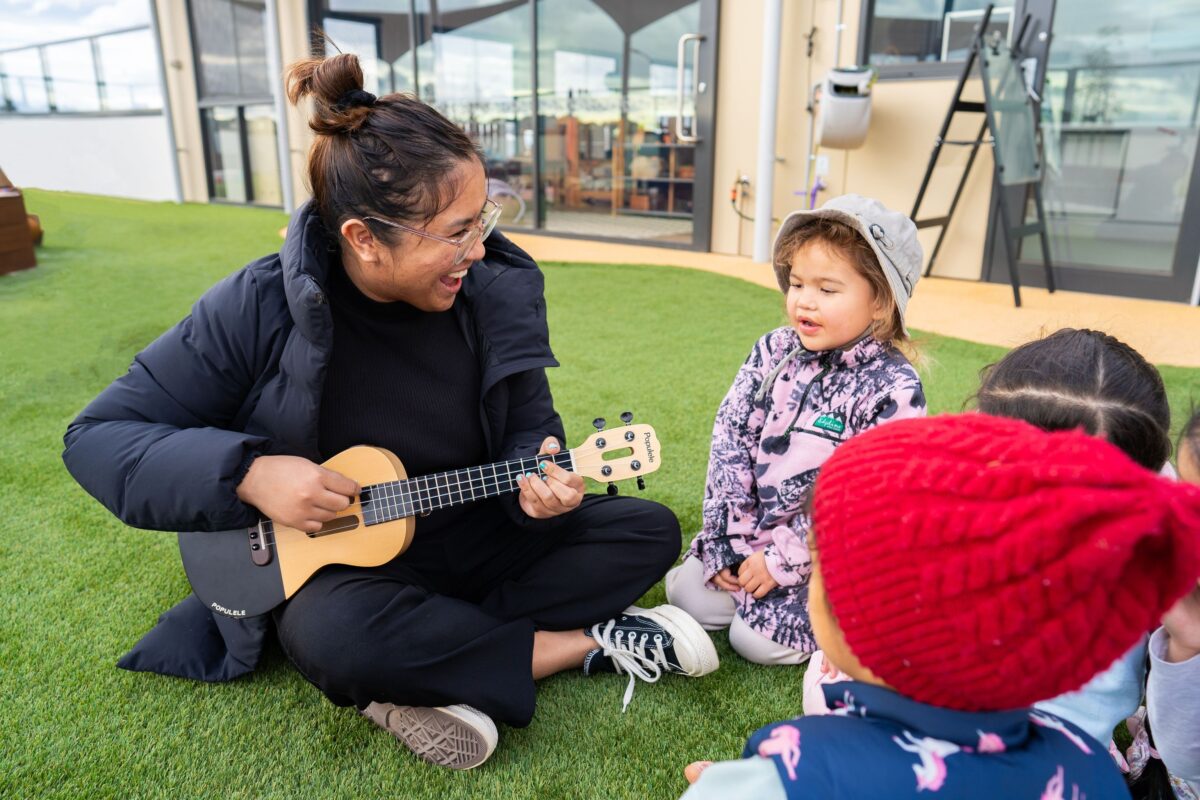
Overall, screens are an inevitable part of living in the modern world. Whether it’s at work, out in public, lounging at home, or at school, your child will be exposed to technology. However, you don’t have to be constrained to overstimulation and the tantrums that follow.
By engaging in face-to-face activities, setting clear boundaries, and leading by example, you can limit your child’s screen time with just a few simple steps. Even better, you can take control of your child’s development, so they’ll get the best possible start for primary school, secondary school, and beyond.
🍃 To tour one of our beautiful Centres, please click here. Otherwise, check out our website to register your interest at Explorers Early Learning today!
Maternity Hospital Bag Checklist: What to Pack for Childbirth
Are you approaching your third trimester? If so, stop what you’re doing and read through our maternity bag checklist to ensure you and your family are ready for the big day!
Preparing for the arrival of a child is an exciting and sometimes daunting experience, whether it’s your first time or your fifth. Therefore, packing your maternity hospital bag well in advance will save you a lot of time and stress.
In this post, we provide a handy maternity bag checklist for everything you need to make your hospital stay as comfortable and stress-free as possible.
For a PDF of the following list – click here.
When Should You Have Your Maternity Bag Packed?
We suggest having a maternity bag packed and ready by the door (or in the car), around the 36 week mark, which is well into the third trimester. This will give you plenty of time to ensure everything is ready for the big day, night, or early morning (labour often strikes when you least expect it!).
However, every pregnancy is unique. Some women may prefer to have their bags packed earlier, especially if there are known risk factors or signs of preterm labour.
Why is a Hospital Maternity Bag Important?
You may be asking yourself why you need a hospital maternity bag at all. Hospitals are staffed by doctors and professional midwives, so they’ll have everything you need, right?
While the hospital will provide essentials, they won’t provide extra clothing for the baby, books, entertainment devices, snacks, personal toiletries, etc. Although hospitals are great at what they do, they aren’t supermarkets!
Therefore, we recommend sitting down with your partner, family, or doctor to run through the following list and check off any items that need to be added or removed. Once you have your personalised list, set aside an afternoon to pack your bag and prepare for the big day!
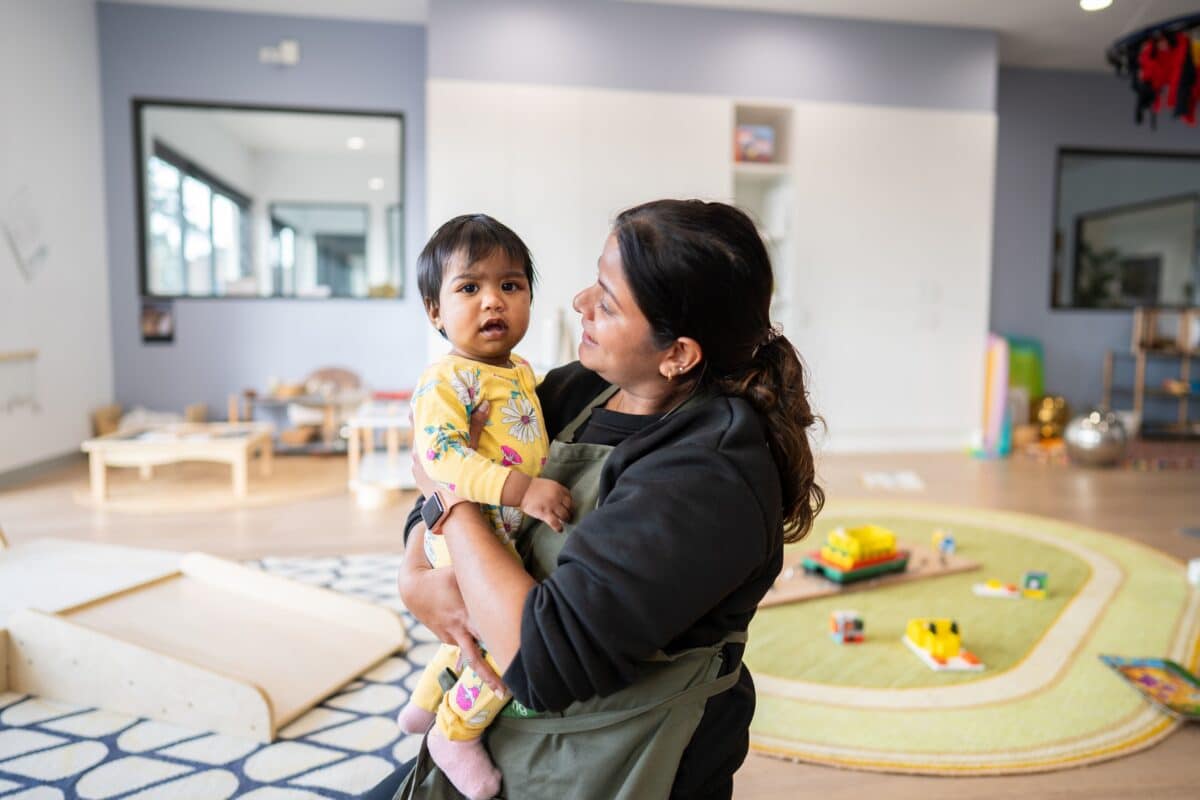
Essential Documents and Information
- Birth plan (if you have one)
- Medicare card
- ID and hospital paperwork
- Health insurance information
- List of important phone numbers (family, friends, and support network)
Comfortable Clothing
- Loose-fitting nightgowns or pyjamas
- Comfortable nursing bras or maternity bras
- Recovery pants
- Warm socks and slippers
- Bathrobe
- Loose-fitting outfit to wear when leaving the hospital
Personal Care Items
- Toiletries (toothbrush, toothpaste, shampoo, conditioner, body wash, etc.)
- Hairbrush and hair ties
- Lip balm
- Maternity pads
- Nursing pads and nipple balm (if planning to breastfeed)
- Disposable postpartum underwear and/or full-brief underwear
- Any personal medication if needed
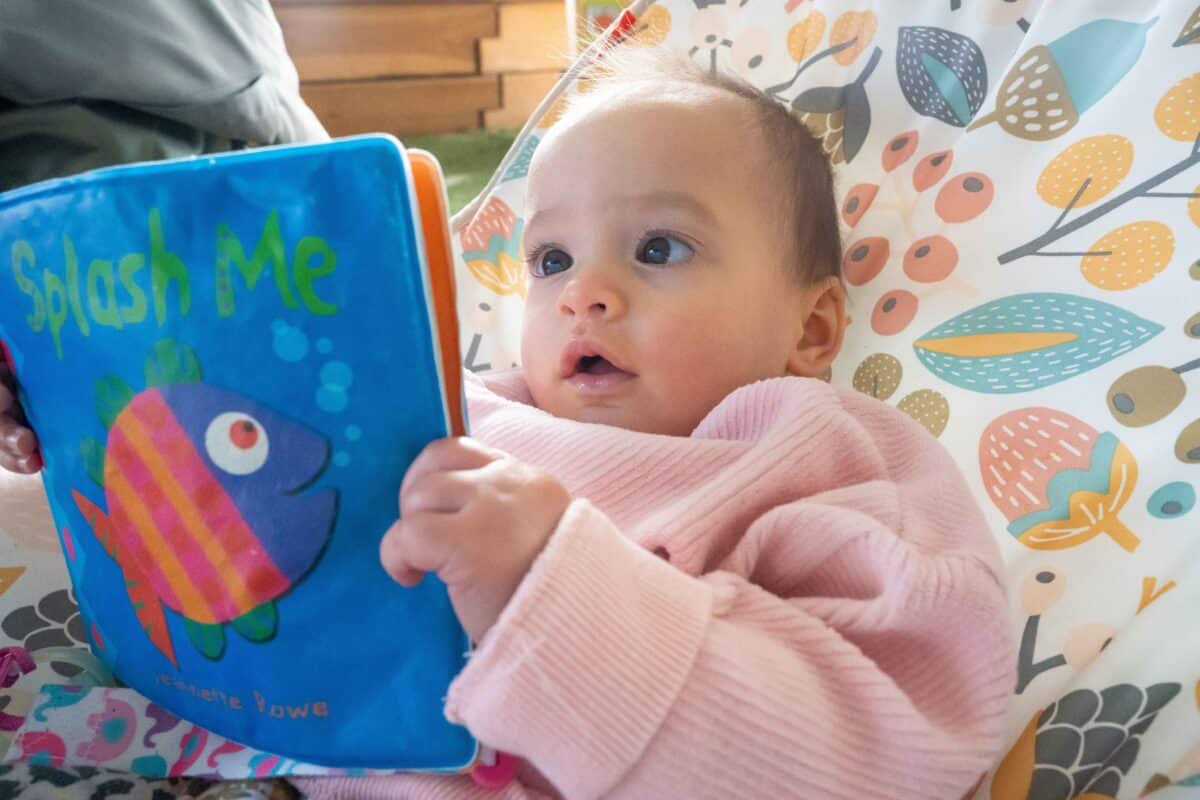
Baby Essentials
- Newborn nappies
- Wipes
- Baby blankets
- Swaddles
- Onesies or baby clothes
- Hat and mittens
- Burp cloths
- Nursing pillow (if desired)
- Going-home outfit for the baby
- Car seat or capsule (installed in the car prior to going to the hospital)
- Infant formula (only if planning to use a milk replacement formula to feed your baby)
Comfort and Entertainment
- Pillows (for extra comfort during labour)
- Extra blanket for partner/support person
- Snacks and drinks for labour and postpartum
- Water bottle with a straw for easy sipping during labour
- Entertainment device (phone, tablet, e-reader, laptop, etc.) and charger
- Camera or video recorder
- Books and/or magazines
Additional Items
- Nursing cover (if desired)
- Nursing-friendly nightwear for easy breastfeeding
- Extra clothes and toiletries for your partner/support person
- Cash or change for vending machines or parking
- Breast pump (if planning to use one)
- Any special items for support during labour such as a TENS machine
Overall, preparing your maternity bag in advance is an exciting milestone as you approach your due date. By having a well-organised and well-stocked bag, you can ensure you’ll have all the essential items you’ll need during labour, delivery, and postpartum.
Remember – every birth experience is unique, so feel free to customise the list based on your preferences and needs. With your maternity bag packed and ready, you can focus on welcoming your precious child into the world.
🍃 To tour one of our beautiful Centres, please click here. Otherwise, check out our website to register your interest at Explorers Early Learning today!
The Benefits of Messy and Sensory Play: Why Children Need to Make a Mess
What is messy and sensory play, and is it worth the clean-up? Read on for our full breakdown of messy play, along with some suggestions to get your child’s brain buzzing 👇
Messy and sensory play is incredibly beneficial for children as young as six months old. From finger painting to exploring sensory materials, messy play offers a world of opportunities for learning and physical development, even if the clean-up can be a hassle!
In this post, we break down the physical and cognitive benefits of messy play and explore why your child should embrace the mess.
Sensory Development
Messy play engages (almost) all the senses. When children squish their fingers into mud or clay, they feel the sensation, hear the sounds, and smell the material. Therefore, sensory activities provide valuable cognitive input, helping children refine their tactile perception and develop a greater understanding of different textures.
And there’s so many sustainable options to choose from:
- Water
- Sand
- Dirt
- Mud
- Homemade playdough
- Clay
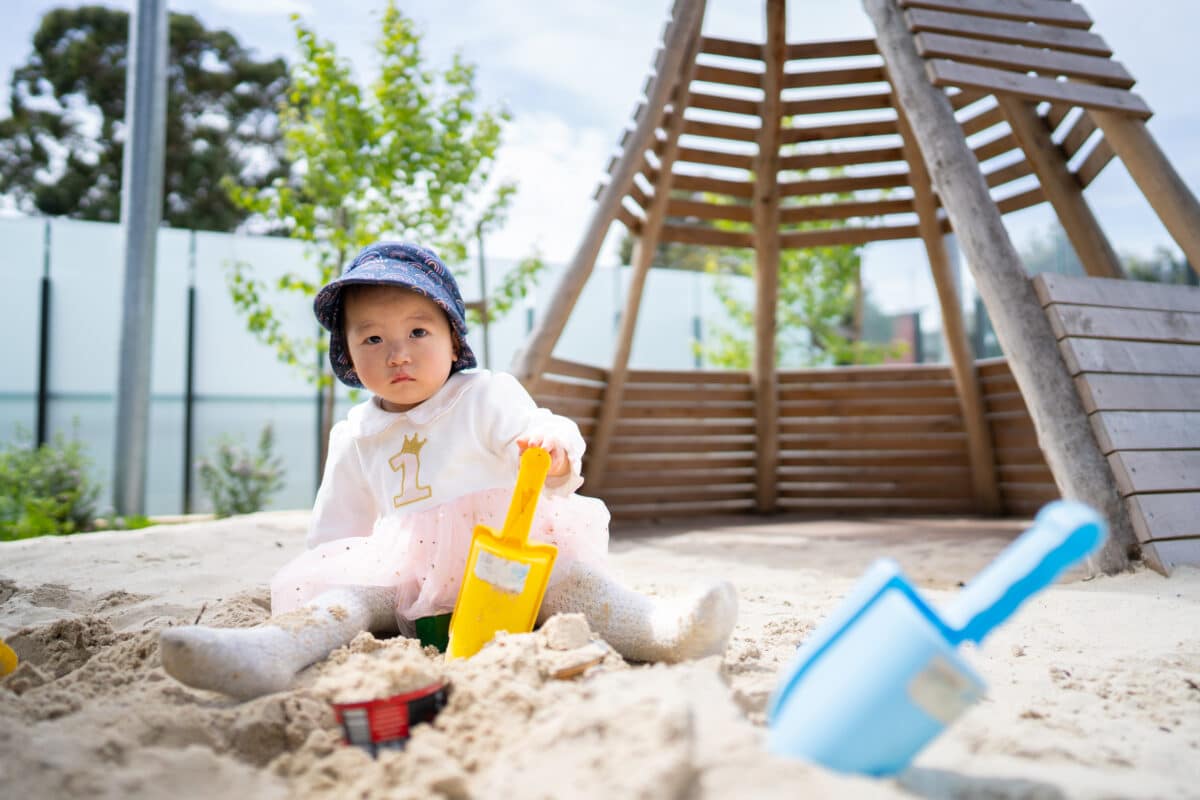
Messy Play Activities
6-12 months
Although they’re mostly babbling at the 6-12 month mark, babies love messy play and sensory exploration! Just be sure to supervise and only use gentle materials:
- Cotton
- Fabric
- Crinkly paper
- Fleece
- Satin
- Water
12-24 months
By age two, children are as curious as ever. Their brains develop rapidly as they near the end of the first 1000 days of life. Therefore, they want to touch, smell, and experience the world around them. This is perfect for messy play:
- Sensory bins
- Sand/clay
- Homemade playdough exploration
- Finger painting
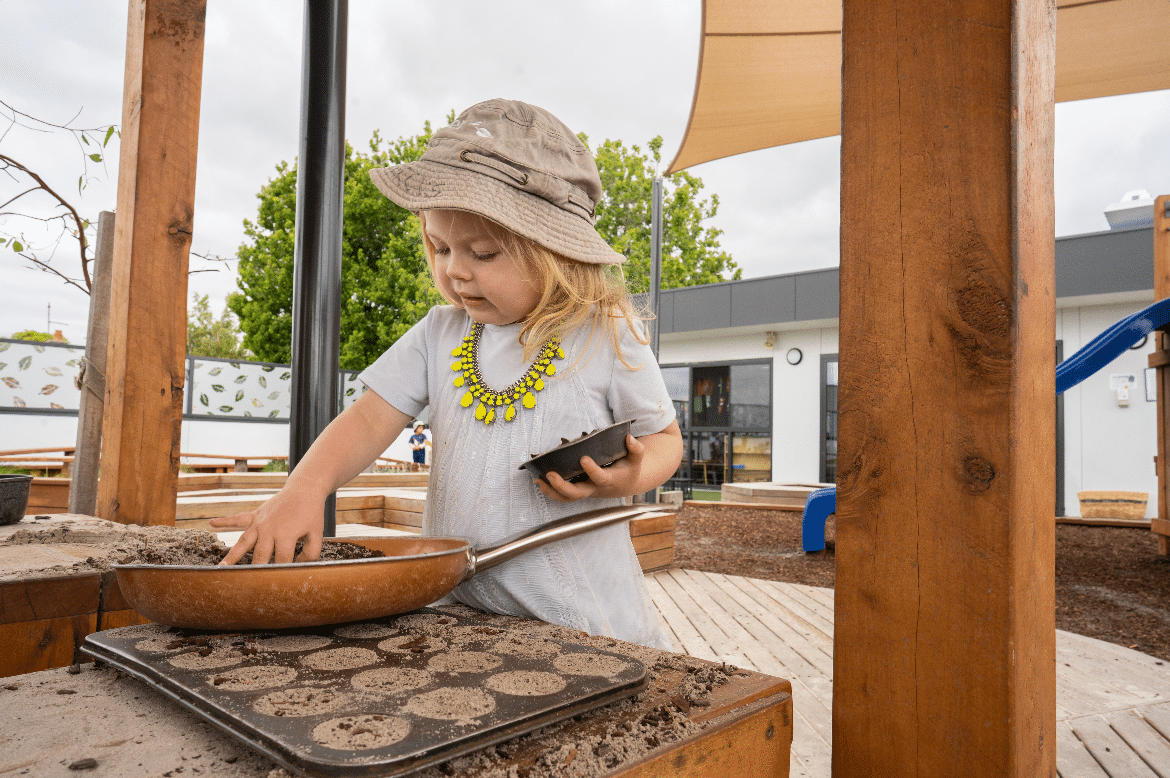
2-3 Years
Children between ages 2 and 3 are typically walking, talking, and full of attitude! This is where you can really start to inspire their artistic side by adding more elements to their messy play experience.
- Water-based paints
- Sensory ice play
- Clay time
3-5 Years
By the time your child is in Kinder, you’ll probably be looking for ways to give them the best start for primary school. Therefore, this is the perfect time broaden their messy play experience to prep them for their next big steps:
- Nature exploration
- Sensory storytelling
- Painting and drawing
Cognitive Skills
Messy play goes beyond engaging the senses. Rather, it aims to nurture children’s emerging cognitive skills.
When children engage in messy play, they’re presented with open-ended materials and situations which encourage problem-solving, critical thinking, and decision-making. For instance, when building sandcastles or clay sculptures, children think creatively and strategically to achieve their desired outcomes.
In addition, messy play provides opportunities for experimentation and exploration. Children mix colours, observe cause-and-effect relationships, and question what happens next when different materials are combined. This hands-on approach fosters curiosity and a love for discovery, promoting a growth mindset in children.
Fine Motor Skills
Messy play activities often involve actions such as squeezing, pouring, and scooping. These activities promote the development of fine motor skills and hand-eye coordination in children. Whether they’re using a paintbrush, pouring water, or moulding clay, children flex their dexterity and refine their ability to control and coordinate their movements.
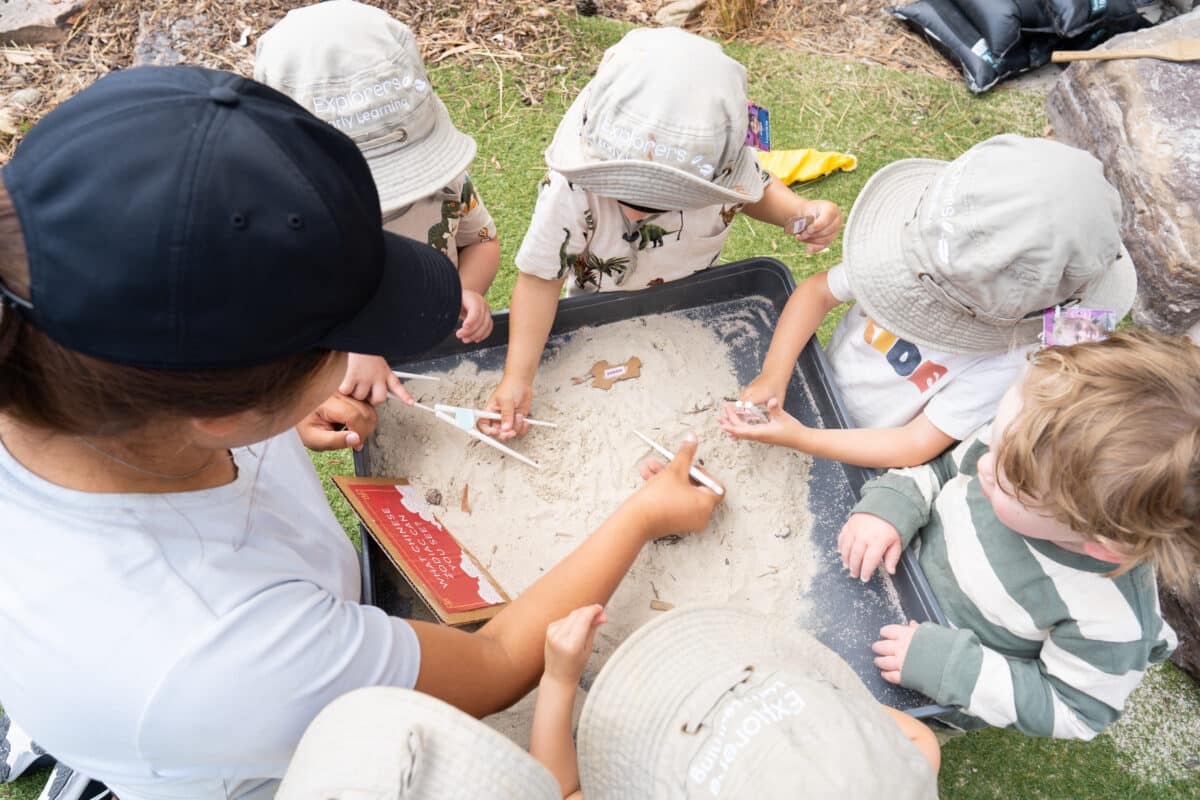
Language Development
Messy play also plays a vital role in language development. During messy play, children inevitably engage in conversation and storytelling. They describe the sensory experience, use descriptive language to express how the colours make them feel, and share their observations. This rich linguistic environment expands vocabulary, improves communication skills, and nurtures creative expression.
Emotional and Social Development
Embracing messy play allows children to express themselves freely and build independence. When children are given the freedom to explore materials and engage in unstructured play, they develop a sense of ownership and pride in their creations.
Messy play also offers opportunities for collaboration and sharing as children work together on projects and exchange ideas.
Moreover, messy play provides a safe space for children to experience a range of emotions. Whether it’s the joy of squishing paint or the frustration of a sandcastle collapsing, children navigate and express their feelings through these immersive experiences. As they explore and experiment, they develop emotional resilience and adapt to different situations.
Creativity and Imagination
Messy play and creativity go hand-in-hand. When given open-ended materials and the freedom to explore, children create, transform, and invent things most adults couldn’t dream of.
Whether they’re sculpting clay, mixing colours, or creating sand masterpieces, messy play encourages divergent thinking and fosters innovation.
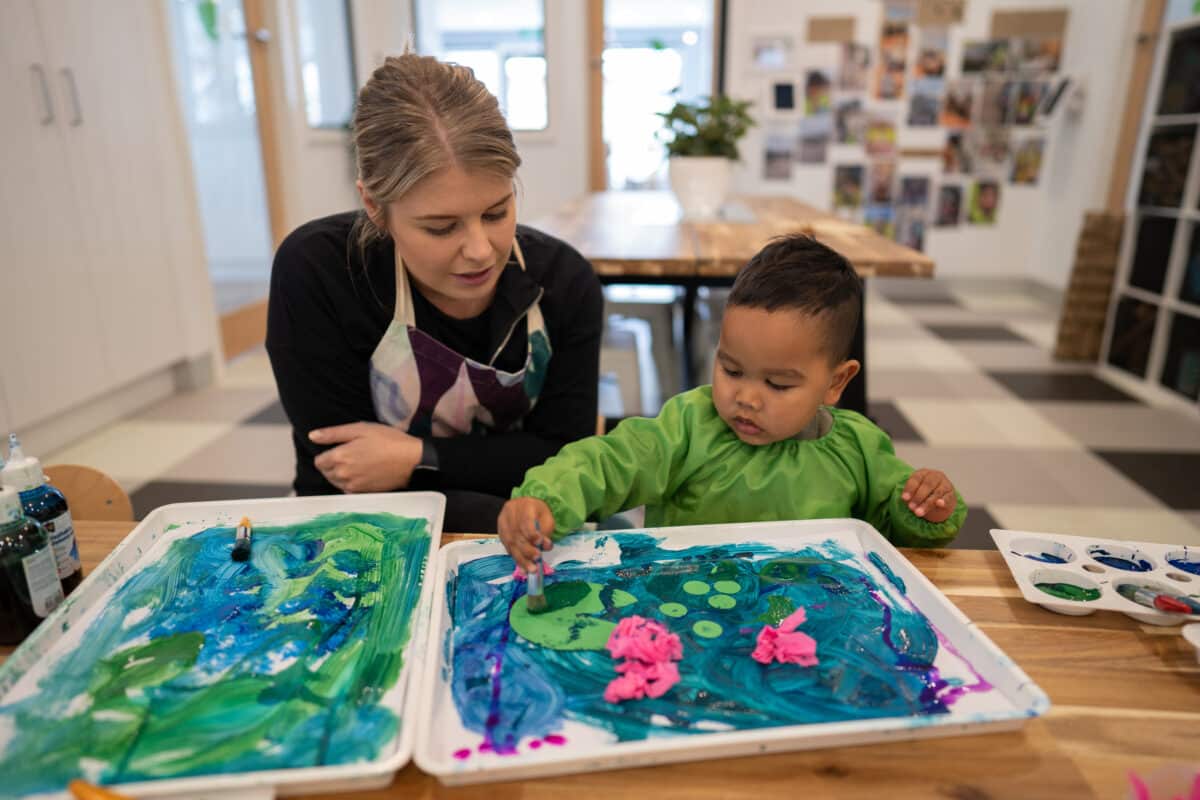
Why is Messy Play Important?
The focus of messy play is on process rather than the end result. Children learn that there’s no one rule to express yourself, allowing them to embrace their creativity without fear of judgment. This freedom nurtures self-discovery and fuels a lifelong love for art and curiosity.
Ultimately, messy play provides children with invaluable opportunities for growth, development, and self-expression. By embracing the mess, they unlock a world of creativity and sensory exploration. Additionally, the benefits of messy play extend beyond the temporary chaos and strengthen cognitive, emotional, and social skills in children well into primary school.
Just remember to provide a safe and supervised environment for messy play, use child-friendly (and sustainable) materials, and try to involve your child in the clean-up process. After all, the mess is temporary, but the skills they gain last a lifetime.
🍃 To tour one of our beautiful Centres, please click here. Otherwise, check out our website to register your interest at Explorers Early Learning today!